Plants for attracting Bees, Butterflies and Hummingbirds
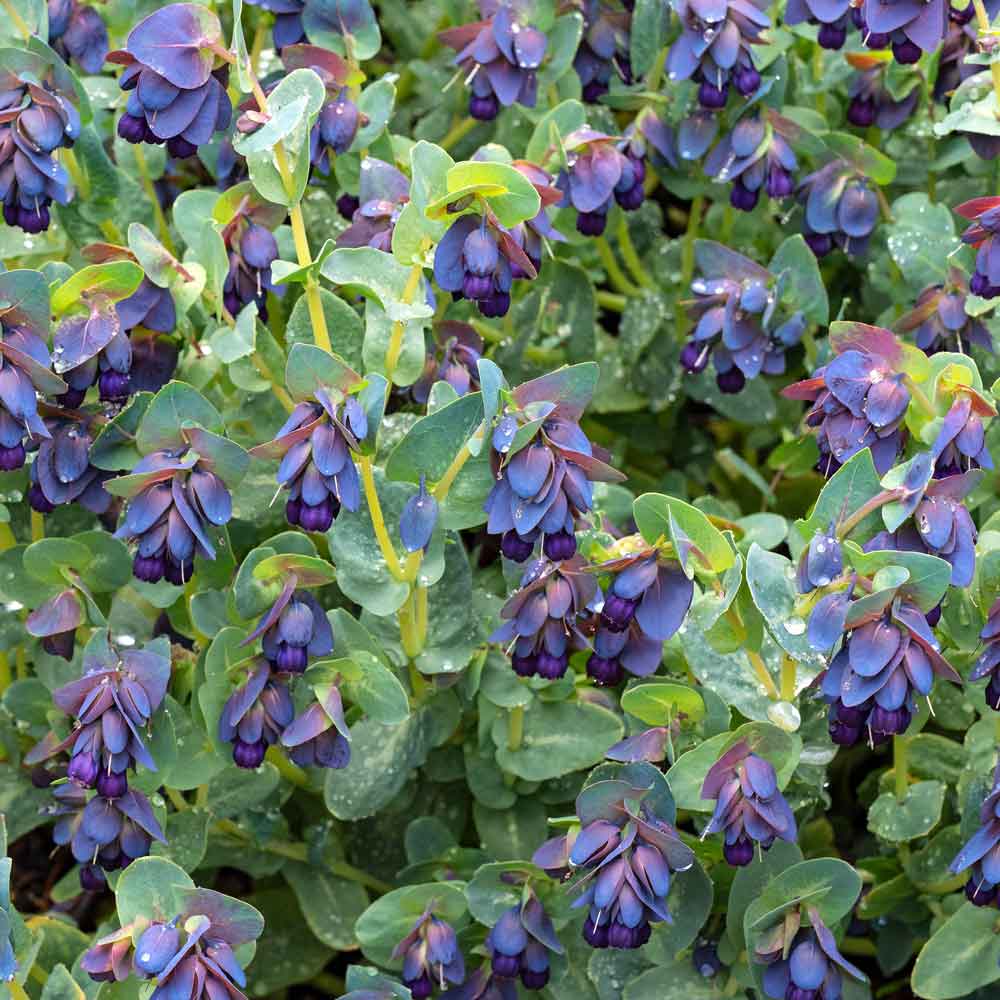
Honeywort produce beautiful plants with purple-blue flowers that bloom in the summer. The flowers have a unique shape and texture, with a tubular structure that flares out into five petals. One of the most striking features of honeywort's flowers is the color. The purple-blue hue is rich and vibrant and can vary in intensity depending on the light and growing conditions. The color is also enhanced by the glossy surface of the petals, which reflects light and creates a luminous effect.

Throughout the centuries, Achillea herbs were useful for medical purposes. The herb seeds were grown for the plants' medicinal properties in the treatment of bleeding and wounds. Achillea Yarrow is a perennial, native to the United States and is happy to thrive in those infertile, untended garden spots. These Yarrow flowers bloom in just 4 months after being planted from Yarrow seeds, and they bloom through summer and fall especially if the spent flowers are deadheaded.
A perennial for zones 3-10, grows 12-18 inches tall.

Native to the Mediterranean, Echium Blue Bedder plants have masses of bright blue, upturned, bell-like flowers in clusters along branching stems covered with bristly grey hairs. The plants are easy, resilient and not fussy about soil. Annual growing 16" tall.
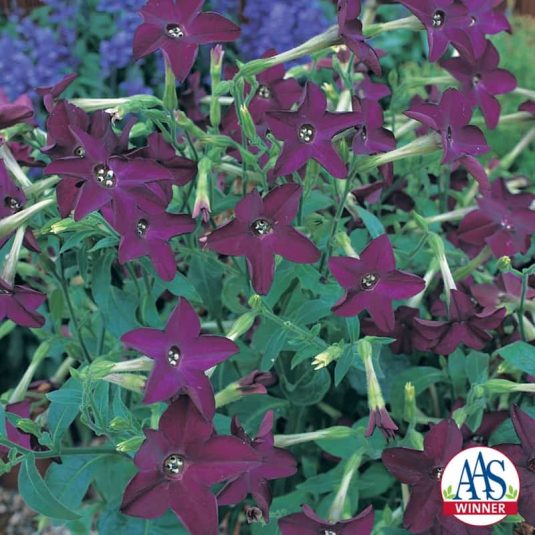
Perfume Deep Purple flowers are shaped like stars. The stars shine at night and this is when Perfume Deep Purple begins its performance. The unique quality is the strong fragrance which scents the air in the evening. The fragrance is not wasted during the day when many people are working. The nightly release of the perfume will entice gardeners to relax and linger in their gardens. Consider Perfume Deep Purple as natural aromatherapy. The rich, lavish deep purple flower color is another unique trait, distinct from other nicotianas. Perfume Deep Purple is easily grown from seed, young green bedding plants or flowering pot plants. Nicotiana, named for Jean Nicot, who introduced tobacco to the French Court, needs a sunny location and is perfectly adaptable to container culture.
Perfume Deep Purple does not require pinching, pruning or deadheading to maintain a crown of starry blooms all summer. Quite heat tolerant, plants need minimal maintenance. Only water and fertile soil are needed for Perfume Deep Purple to bloom profusely all summer. Grow stars in your garden this summer – plant Perfume Deep Purple. Grows only 16-20 inches tall. Annual.
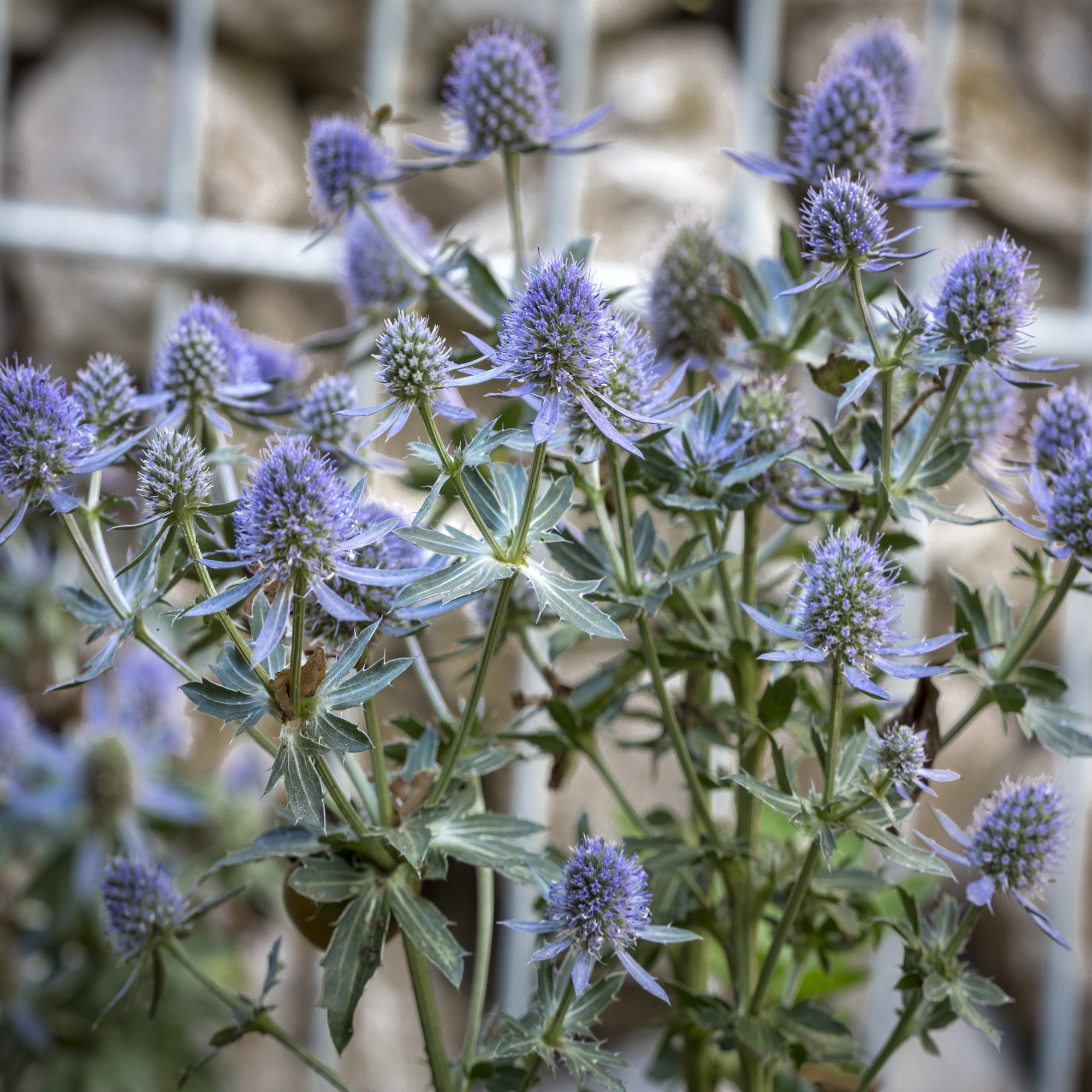
Sea Holly self-sows readily by dropping its flower seeds on the ground, but it is not invasive. If the Sea Holly seeds are started indoors, transplant the seedlings where you want them to grow when they are quite small. The Eryngium plants have taproots, so they won't transplant well once mature. Sea Holly plants attract bees and butterflies, and they are a great plant for a low water garden. Eryngium seeds can be started directly outside in the spring after frost season has passed. Grows about 48" tall, hardy to zone 4.

Bushy, upright habit, typically grows 2-3 feet tall and wide. Has continuous bloom from spring to fall. Prefers full sun or partial shade and well-drained, moderately fertile soil.
Great for containers, borders, and cut flowers. Attracts pollinators like butterflies and bees.
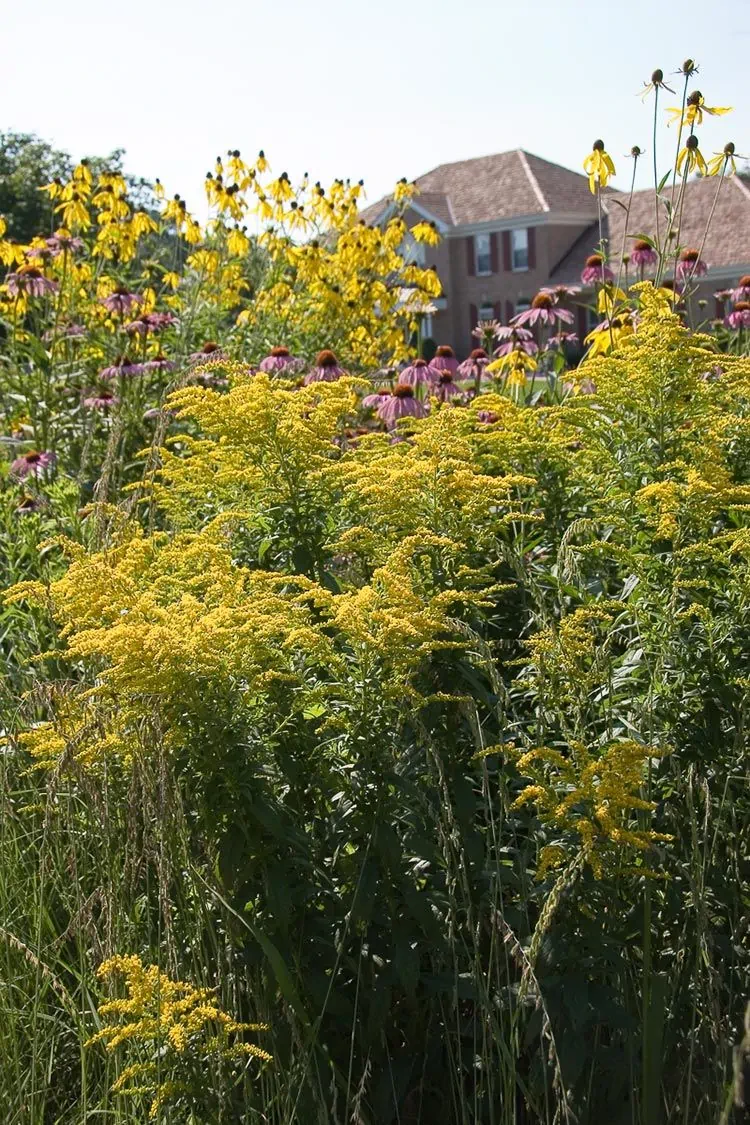
his species is primarily clump-forming and does not spread aggressively as do some of the other goldenrod species and hybrids.
Interesting goldenrod for native plant gardens. Also appropriate for borders, cottage gardens or butterfly gardens. May be grown in herb gardens. Grows 2-4 feet tall, hardy for zones 4-9.
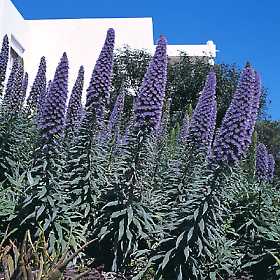
Use Echium against walls and at the back of flower borders or on slopes for a dramatic effect. Pride of Madeira makes a bold addition to any xeric landscape. In their natural habitat they grow on windswept limestone outcrops. The striking blooms make it attractive to bees, butterflies and/or birds. This Echium has evergreen lanceolate leaves, which are about 8 inches long. The narrow, hairy, gray-green colored leaves form round irregular mounds at the ends of the stems. The gorgeous purple-blue flowers have petals with a typical white line, and they appear on broad cylindrical to egg shaped inflorescences of 2 feet long, in spring.
Once Pride of Madeira has completed its flowering, it leaves only the green spires that should be removed and the entire plant cut back hard before winter. Hardiness zones: 9-11. Echium fastuosum is a stunning sun lover for coastal windy gardens, that can withstand negative temperatures down to 26°F. Note that the leaves and the stems may prove slightly skin irritant, so handle them with care. This Echium requires a well-drained ground and is quite happy where soils are dry and poor. Light pruning will keep Pride of Madeira bushy. Cut off flower spikes as they fade in order to promote newer growth. If you choose not to remove the spent flowers, the life span of the plant will be shortened. However, Echium will reseed, producing a flush of fresh new plants. Little or no water is required in mild-summer climates and only weekly watering is required in hotter areas.
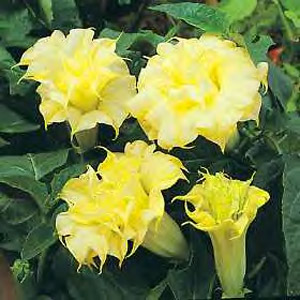
A half hardy annual growing to about 3-5 ft in height. This is a lovely plant bearing large, double golden-yellow trumpet flowers. Lots and lots of petal area. A magnificent new selection from seeds.
Very attractive to butterflies, hummingbirds and sphinx moths.
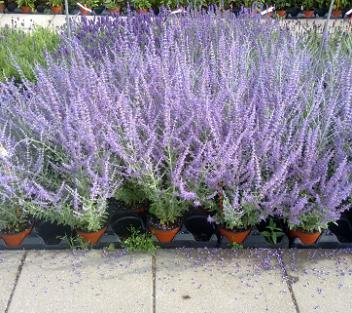
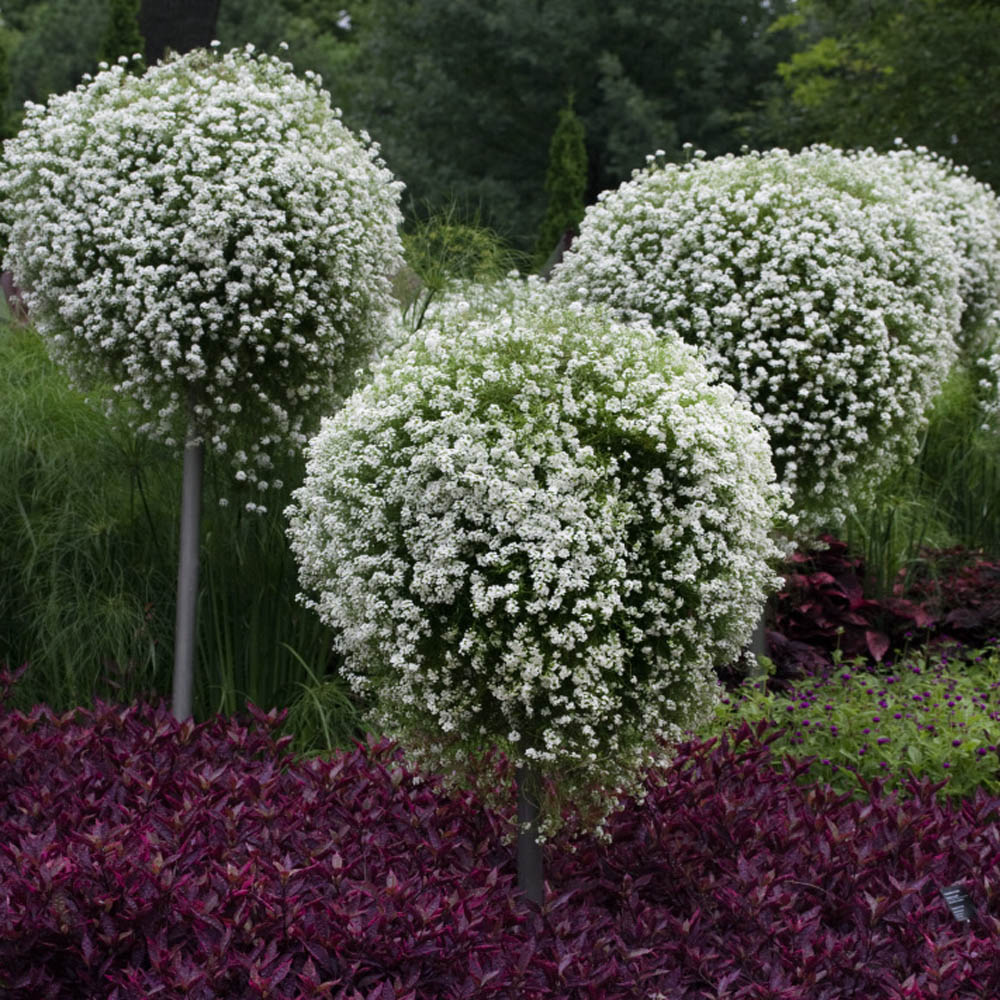
With its sweet fragrance, Sweet Alyssum attracts bees, butterflies and many other beneficial insects such as lady bugs.
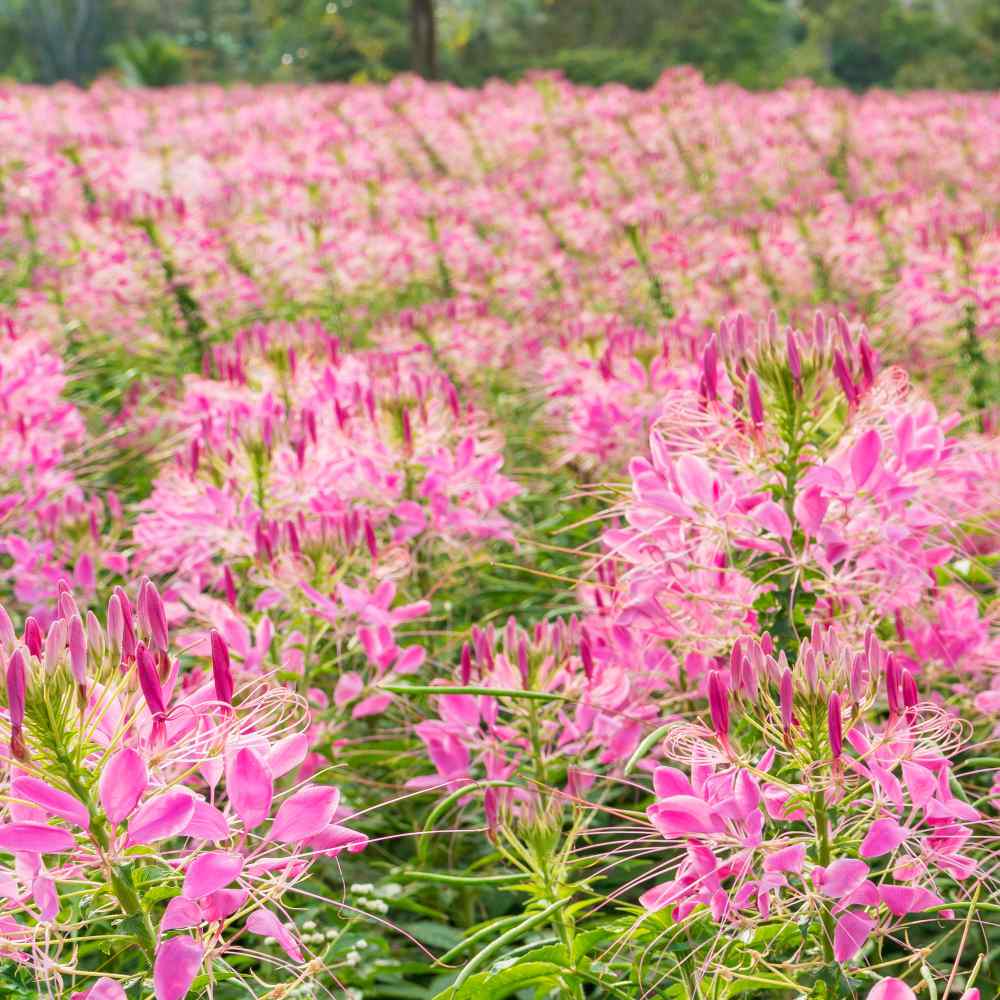
Native Americans used the foliage, stems, seeds and flowers of Cleome plants as important pot herbs. This Cleome plant is rich in nectar and bees adore the blooms giving it the common name of Rocky Mountain Bee Plant. Grows 24-48 inches tall.
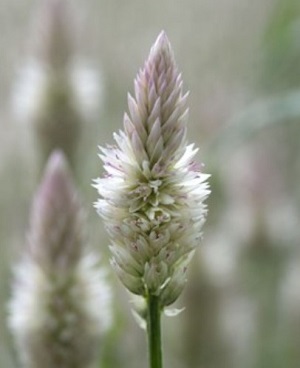
This Celosia has a beautiful colour that varies from white/cream to pink. Also perfect to use as cut flower and as bee and butterfy attractor. Deer resistant. Tender annual. Height: 24-30 inches.
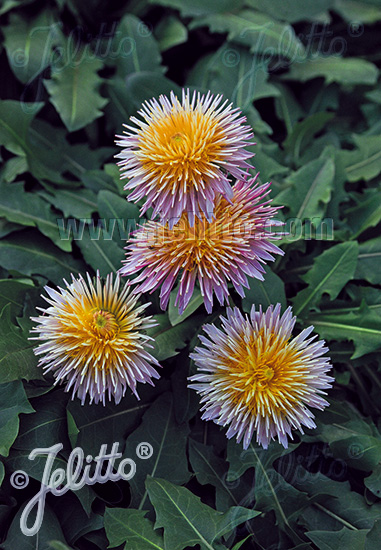
If you are growing dandelions, why not grow this unique, decorative variety that can be used as a medicinal plant, culinary herb, groundcover or as a honey-bee food plant. A perennial plant for zones 3-8.
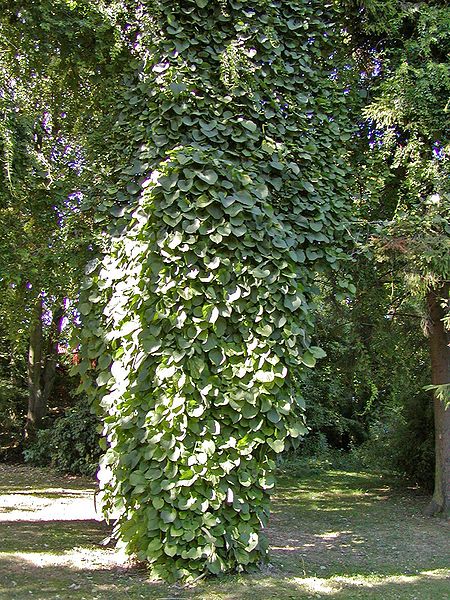
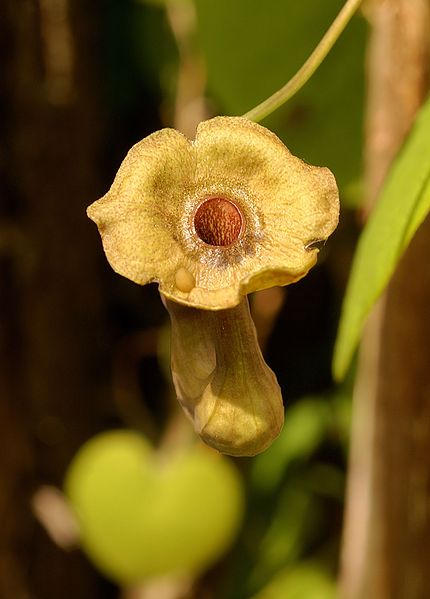
Dutchman's Pipe is a very vigorous native vine. It will create a thick green screen in a short period of time making it ideal for covering a fence, wall or strong trellis. It can grow to 30 feet tall in some cases.
It has large, dark green, heart-shaped leaves and very interesting flowers that are shaped like a small pipe. They are a few inches long and are a mahogony-cream color.
This vine plays an important role in the life of native Pipevine Swallowtail butterflies. The flowers provide nectar for the butterflies, and the leaves are an important food source for the caterpillars. The vigorous growth of this vine makes it easy to share the leaves with these beautiful insects.
This native plant grows best in moist, well-drained soil, in full to partial sun. It can reach heights of 30 feet tall. It is a good plant for having few pest or disease problems, and as a bonus it withstands urban pollution quite well.
For zones 4-8.

Very sweet fragrant flowers have fringed petals of red, pink, purple or violet. Vase life of 7-10 days. Will bloom in as little as 70 days from seeds.
A perennial for zones 3-8.

Edible Flowers: Add petals to salads, sprinkle over mild fish, use in fruit salads, or to garnish desserts and drinks. Flavor is minty and spicy.Also known as beebalm, Oswego tea, and scarlet beebalm.
Medicinal: Aerial parts in infusions to improve digestion. Leaves and blooms contain thymol-related antibiotic-antiseptic compounds. Perennial in Zones 4-9. Ht. 36-44"
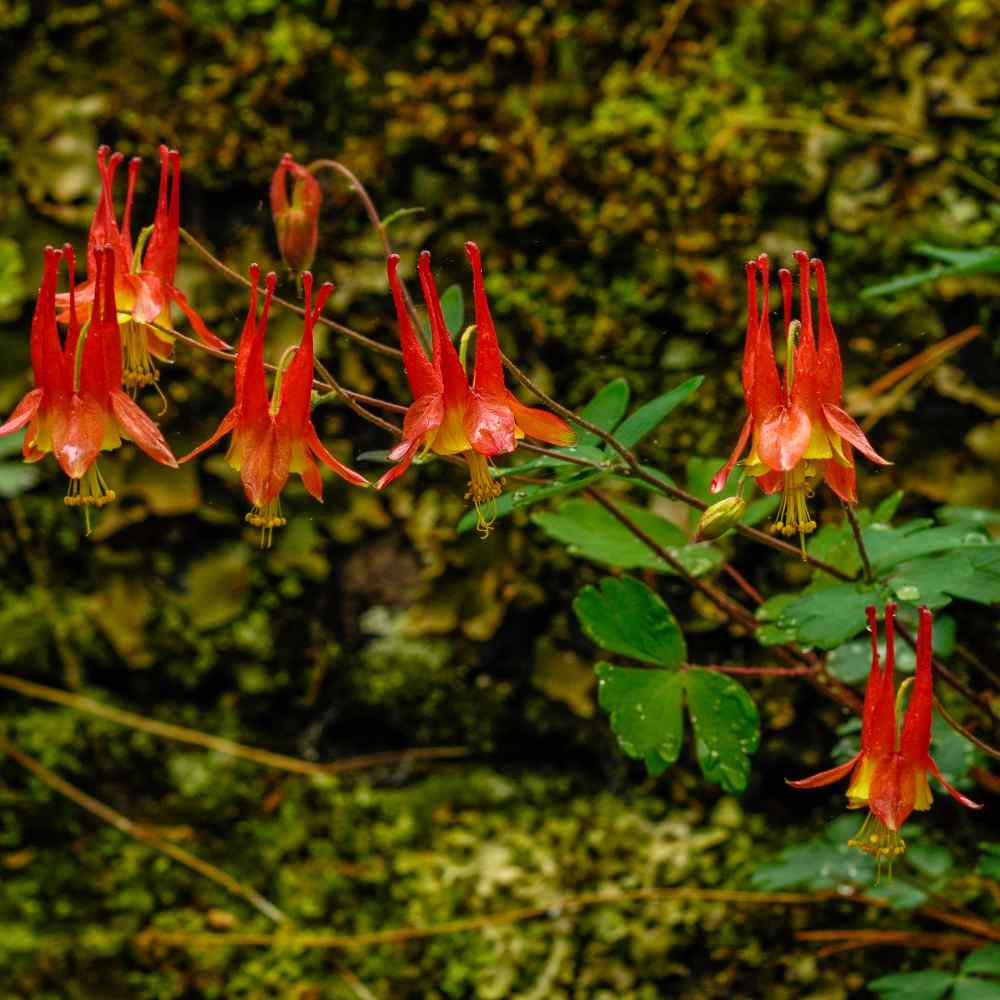
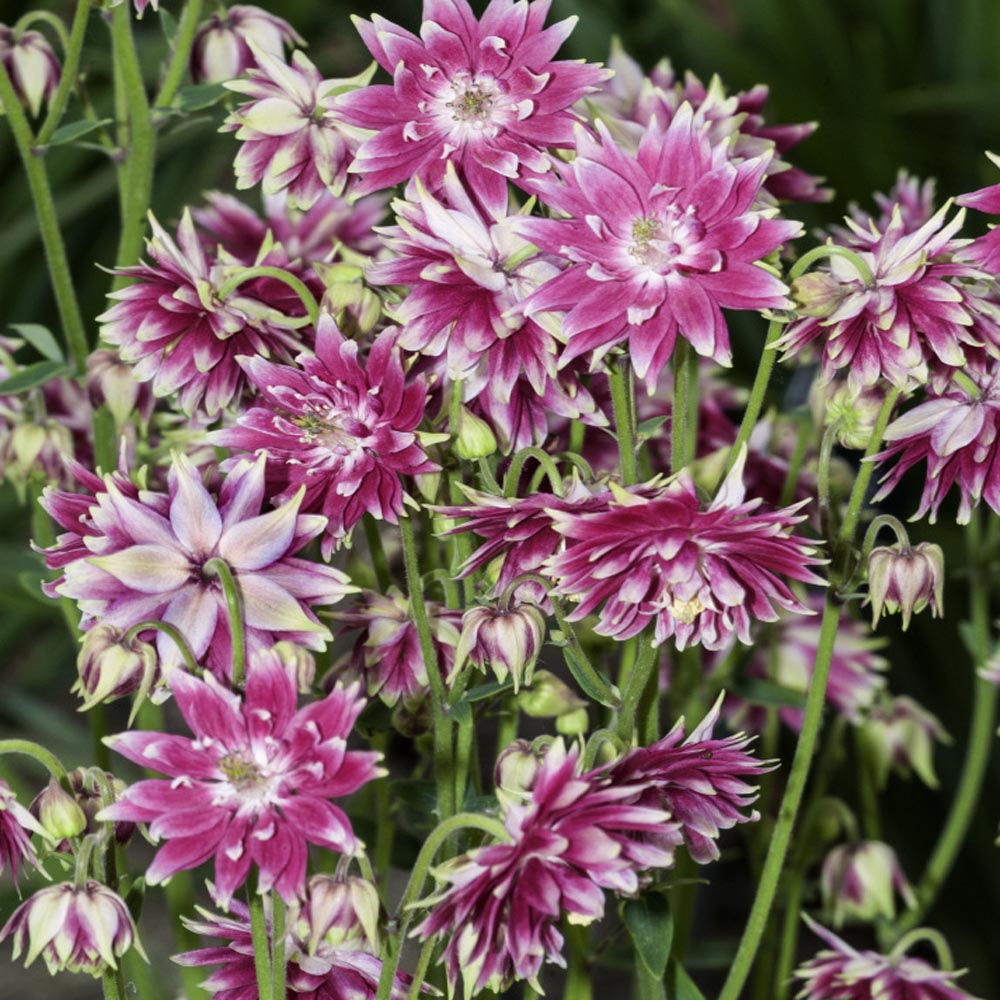
Enjoy this unique variety with its long-lasting blooms. Aquilegia Vulgaris Nora Barlow is marked by spurless, fully double pink blooms which look like small dahlias. This variety is one of the few Columbines with double flowers and no spurs. Once Nora Barlow begins blooming, expect small clusters of pink flowers for 4 - 6 weeks. The flowers either face outwards or are nodding. Grows 24-30 inches tall, a perennial for zones 3-9.
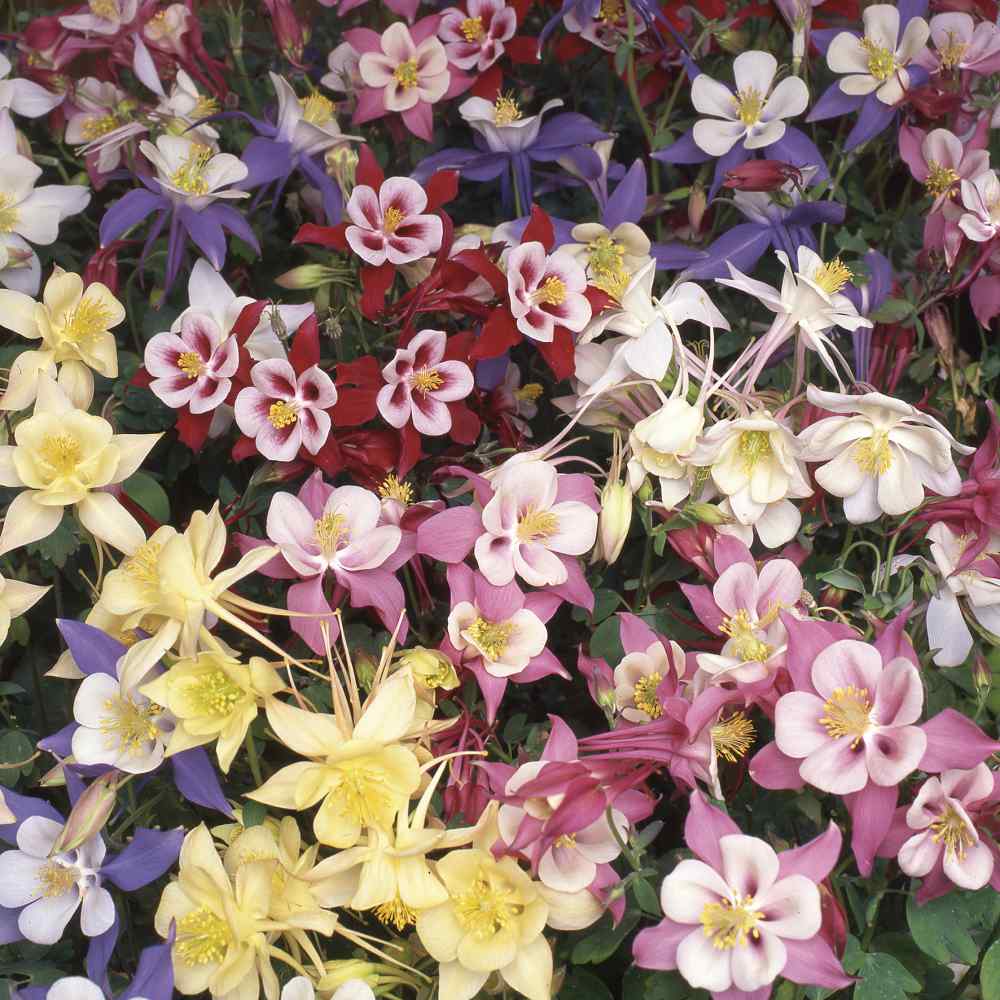
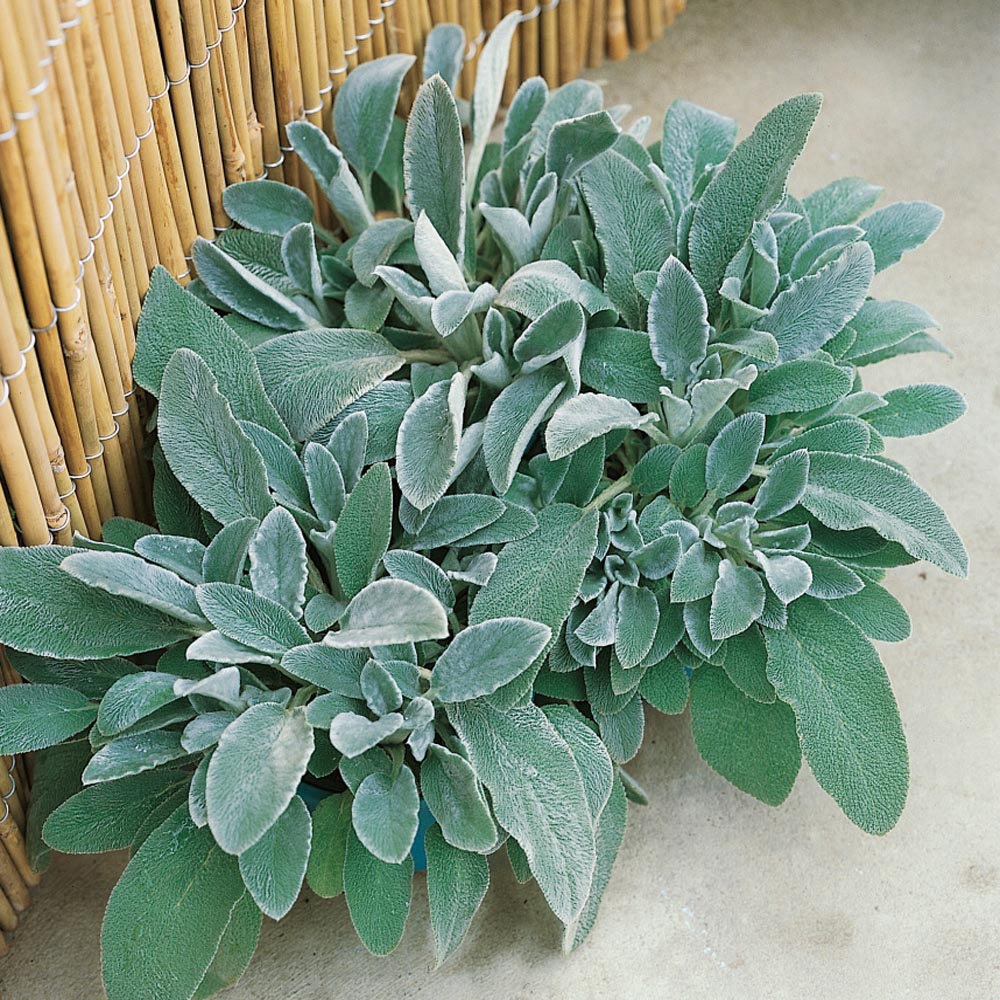
Lamb's Ear attracts bees, butterflies, and hummingbirds with its purple flower spikes in late spring and early summer.
Lamb's Ear is very adaptive. It is drought tolerant enough for a rock garden setting, and it is also a good choice for growing in hot, humid summers where some plants can lose their form. Lamb's Ear ground cover makes a perfect companion plant for a rose garden.
Grow this hardy perennial flower in full sun to partial shade and in well-drained soil. It is a reliable performer that needs little care. Lamb's Ear uses include edging the border of the garden or as a general ground cover. It is a ready self-seeder, and also spreads by roots making it ideal for ground cover. A perennial for zones 4-8, grows about 16 inches tall.
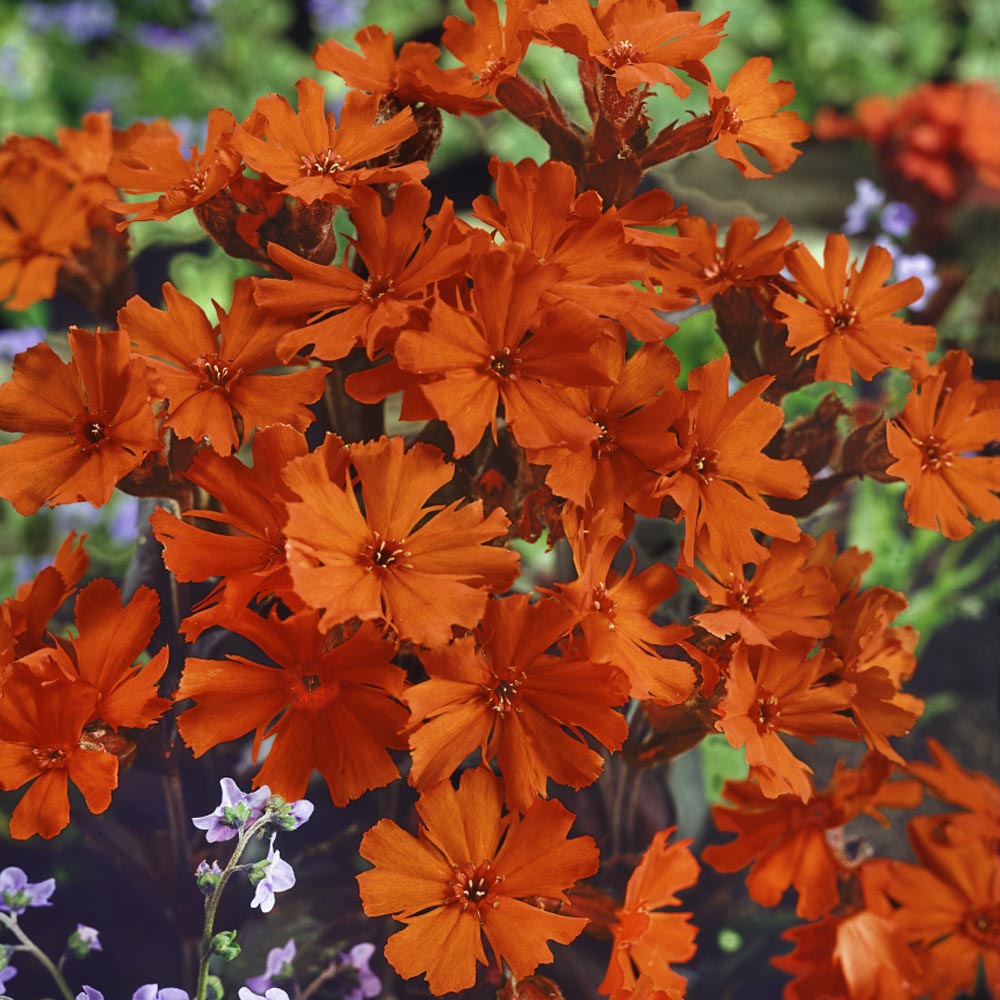
This Arkwright's Campion plant grows 16 - 20 inches tall, with erect stems and is hardy in zones 3 - 10 in normal environmental conditions. Arkwright's Campion flowers are a brilliant orange-scarlet color like molten lava flowing from the volcano, Mt. Vesuvius (hence the name), and they are simple in form with 5 deeply notched petals measuring 1 1/4 - 2 inches across.
Sow Lychnis seeds indoors 6 - 8 weeks before the last frost is expected. Use well-draining starter soil. Sow the Lychnis seeds on the surface, lightly covered. Keep seed continuously moist until germination. Some gardeners will cover with plastic wrap to keep humidity high. Transplant outdoors after danger of frost. Lychnis care includes watering deeply throughout the growing season, mulching around the base to keep the roots cool, and deadheading spent blooms to prolong the blooming season. Let the last blooms go to seed so that Lychnis can re-seed itself. If re-seeding is not desired, cut the stems back down to basal growth after blooming. Perennial for zones 3-10.
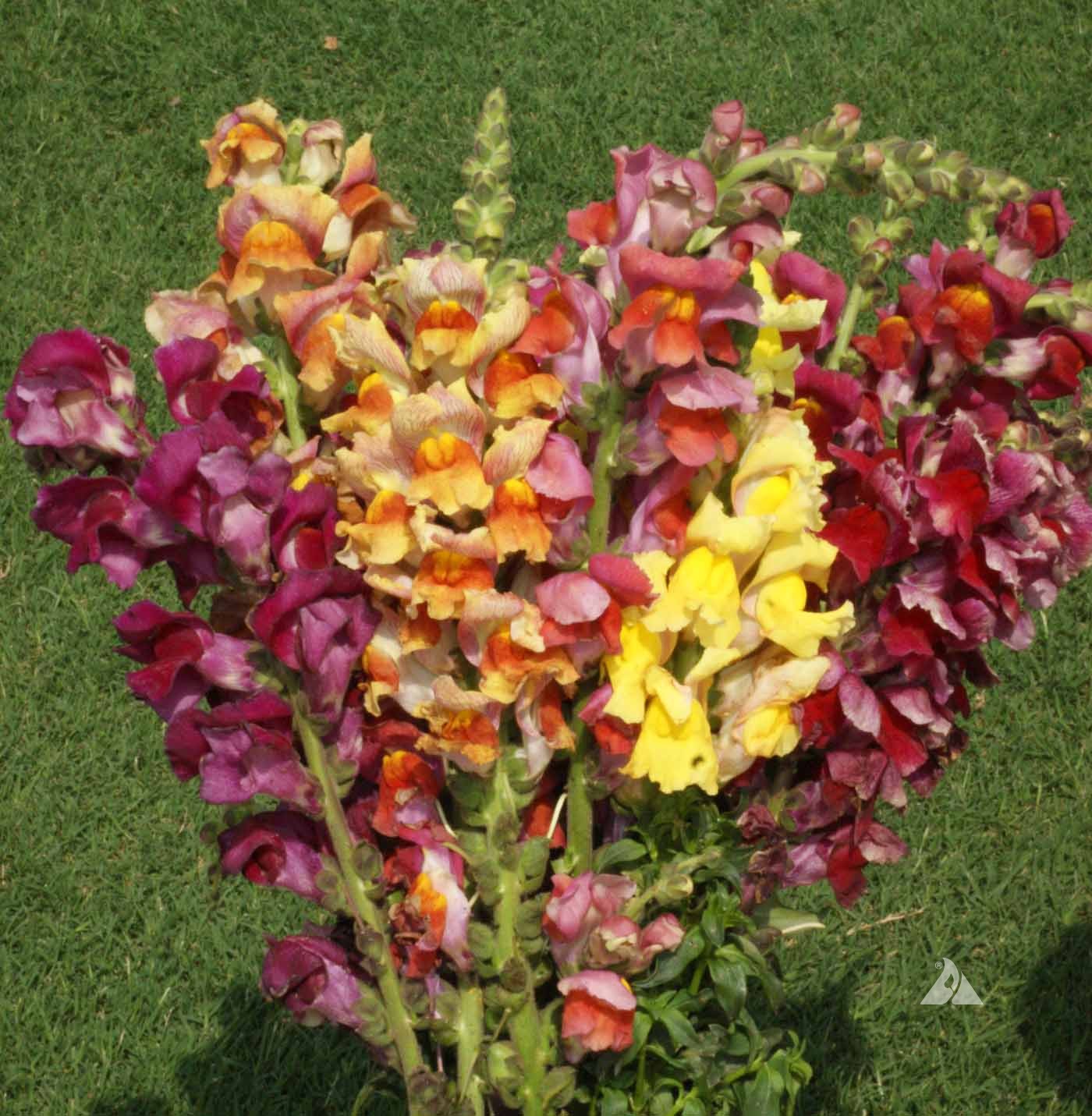
Thomas Jefferson grew snapdragon plant seeds in his famous experimental garden, the first American to document their growth. In addition to being decorative in the garden, snapdragon blossoms are edible and can be used as a garnish for elegant desserts.
Annual.
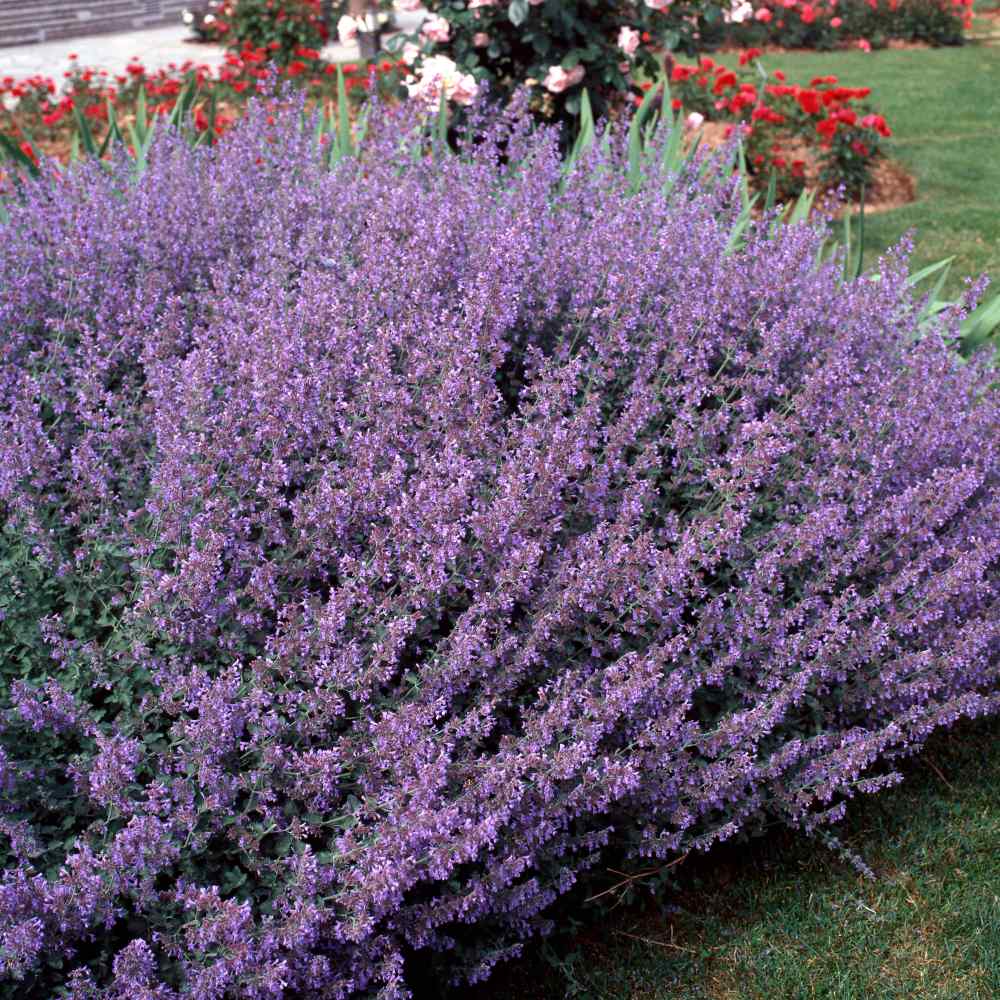
A perennial best suited for zones 3-9.



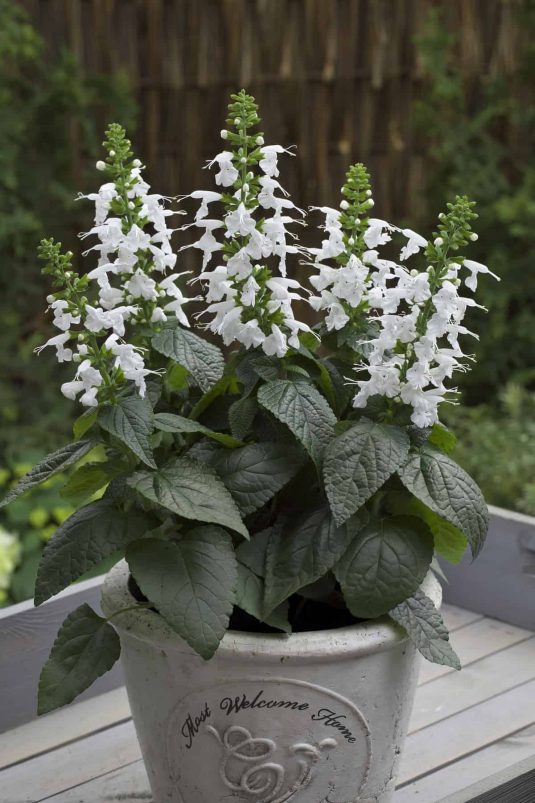
Commercial growers now have an excellent compact white salvia coccinea and will appreciate the earliness, uniformity, and excellent pack performance. Grows only 18 inches tall.
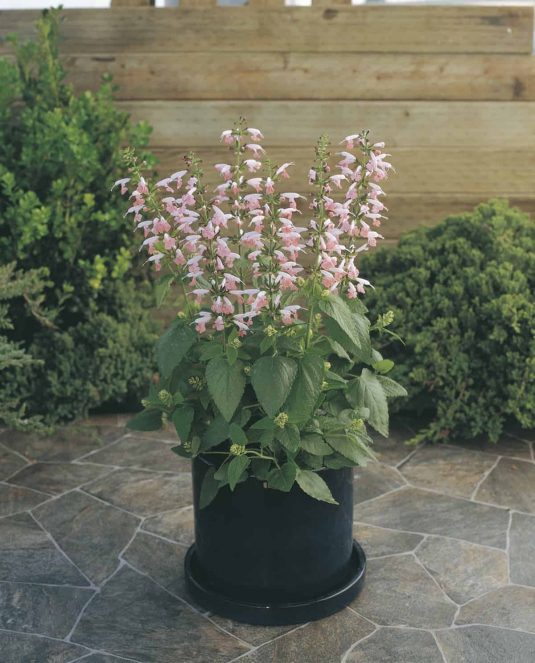
Commercial growers now have an excellent compact white salvia coccinea and will appreciate the earliness, uniformity, and excellent pack performance. Grows only 18 inches tall.
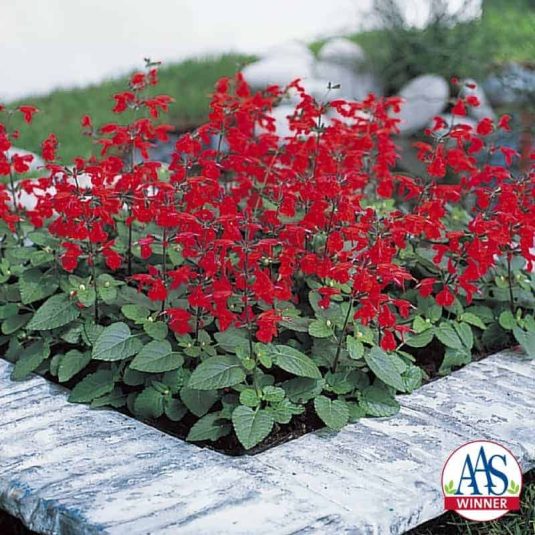
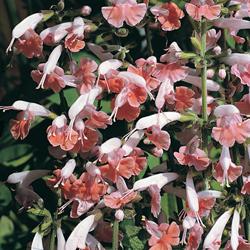
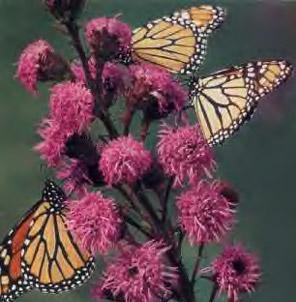
These upright plants can reach 5' in rich soils; in a garden setting you may want to stake them. The height of this Liatris make it an easy target for Monarchs and other butterflies and birds to feed. Blossoms often appear all at once along stems and last for many weeks late summer. Birds find the seeds appealing later in the year.
A perennial best suited for zones 3-7.
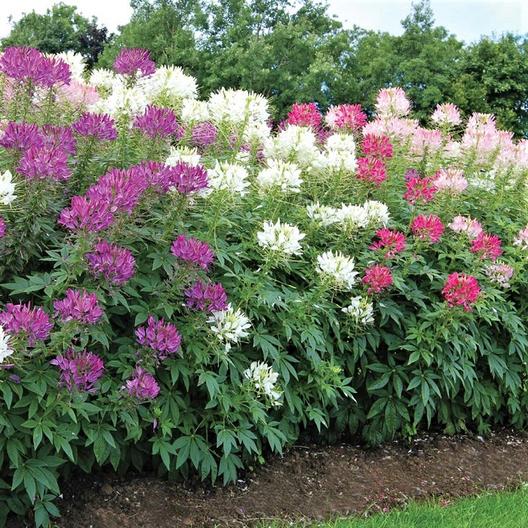
The common name of spider flower comes from the appearance of the long, thread-like stamens of the individual flowers and the elongate seedpods that develop below the blooming flowers. It has been a garden favorite since the 1800's.
Tall, handsome, mixed-colored cleome seeds in search of a garden needing a dramatic-looking, easy going back border flower! These Cleome grow 3 to 5 feet tall and produce vivacious 5-6 inch blooms in rose red, white and violet. Heady profusion of bell-shaped clusters perched on sturdy 3–4 stalks. Delicate new 1" blooms appear each afternoon, nicely counterpointed by lavish, dense, dark foliage.
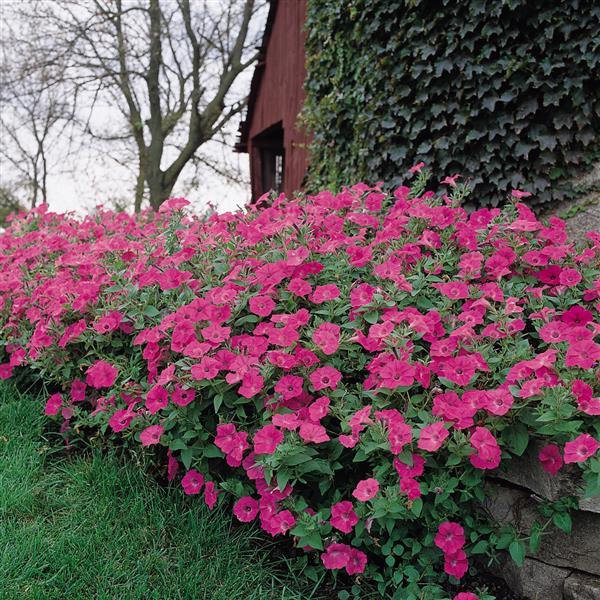
Hedge, vine or impressive groundcover – Tidal Wave does it all! The tallest and most vigorous of the Wave petunia family, Tidal Wave plants super-size colour into big spaces.
Excellent landscape performer with terrific recovery from rain. The plants resist lodging, so they won’t fall open and expose a bare centre like other petunias can.
Height, spread and spacing: Growth habit is based on how closely plants are placed – the closer the spacing, the taller the plants. Spaced a minimum of 12 inches apart, Tidal Wave petunias form a dense, mounded hedge, 16 to 22 inches tall. Grown in a restricted space with support, they grow an extra 2 to 3 feet upward, like a vine.
Spaced up to 24 inches apart in the garden, the plants make a floriferous groundcover, spreading up to 5 feet across per plant.
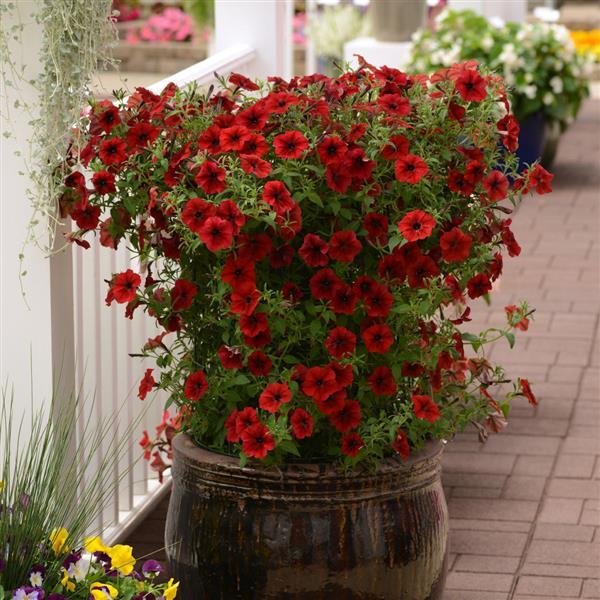
Excellent landscape performer with terrific recovery from rain. The plants resist lodging, so they won’t fall open and expose a bare centre like other petunias can.
Height, spread and spacing: Growth habit is based on how closely plants are placed – the closer the spacing, the taller the plants. Spaced a minimum of 12 inches apart, Tidal Wave petunias form a dense, mounded hedge, 16 to 22 inches tall. Grown in a restricted space with support, they grow an extra 2 to 3 feet upward, like a vine.
Spaced up to 24 inches apart in the garden, the plants make a floriferous groundcover, spreading up to 5 feet across per plant.
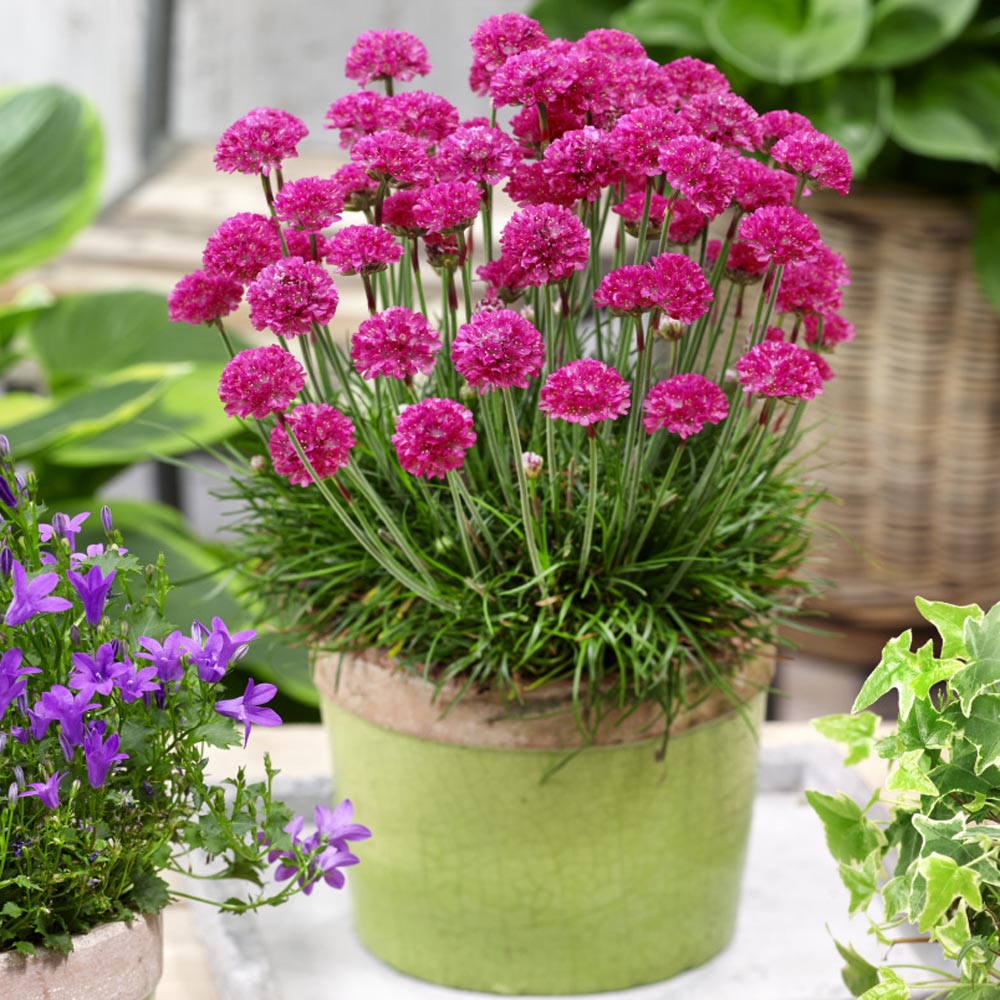
An excellent cutflower. Attracts bees and butterflies. As an ornamental plant, Sea Thrift has already been used in our gardens for a long time. Because of the habitat requirements, it is well-suitable for rockeries, nature-near gardens, heather gardens or beach gardens. If it feels good, it sows itself and appears in many locations.
Armeria Maritima is tolerant of dry, poor and even salty soils. Armeria Sea Pink grows readily from flower seed, and does well in full sun and well-drained soil. It is very drought tolerant and an excellent choice for rock gardens.
Height: 8-10 inches. USDA Zones: 3 - 9

This is an extremely easy plant to grow. It has few pests, requires little maintenance and is drought tolerant once established. Best of all, the bright red, distinctive flowers are irresistible to hummingbirds!
The leaves are narrow, lance shaped, and leathery, with a distinctly citrus aroma. The bright red fuzzy looking flowers are composed mostly of stamens. These are arranged radially around the stem tips in plump clusters like the bristles on one of those brushes used to clean the inside of bottles.
Flowers attract hummingbirds, butterflies, and bees.
Hardy for zones 8-11. Can be grown in containers in cooler zones.
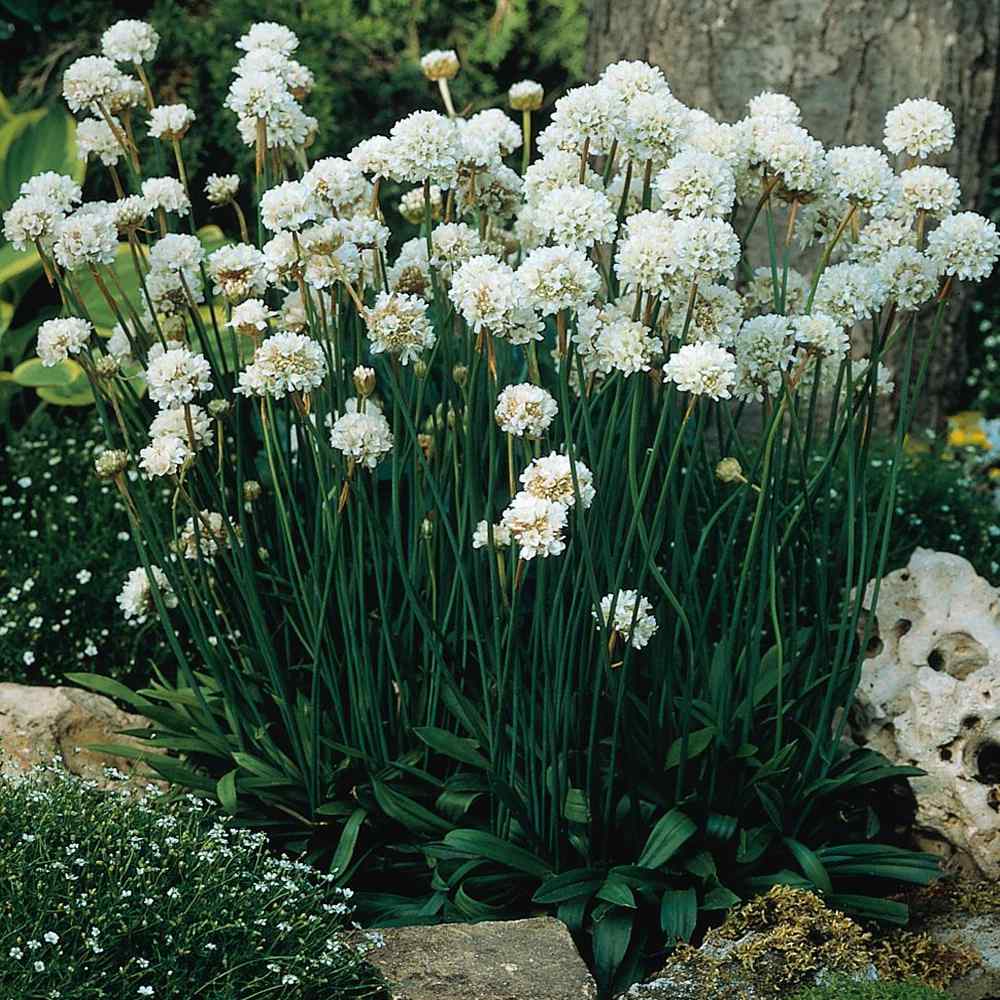
A good cutflower. Attracts bees and butterflies. A versatile little flower that can be planted in containers, the rock garden or the front of the border. Height: 6 inches. USDA Zones: 3 - 7
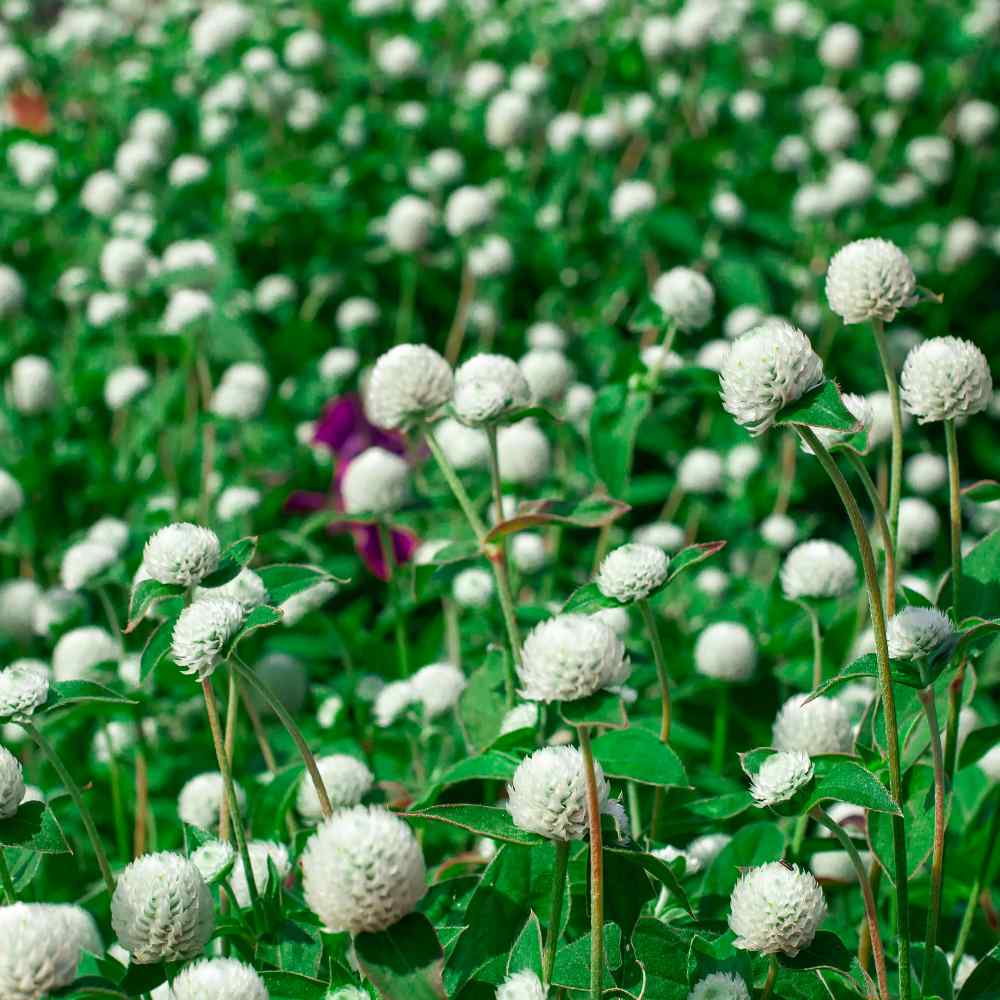
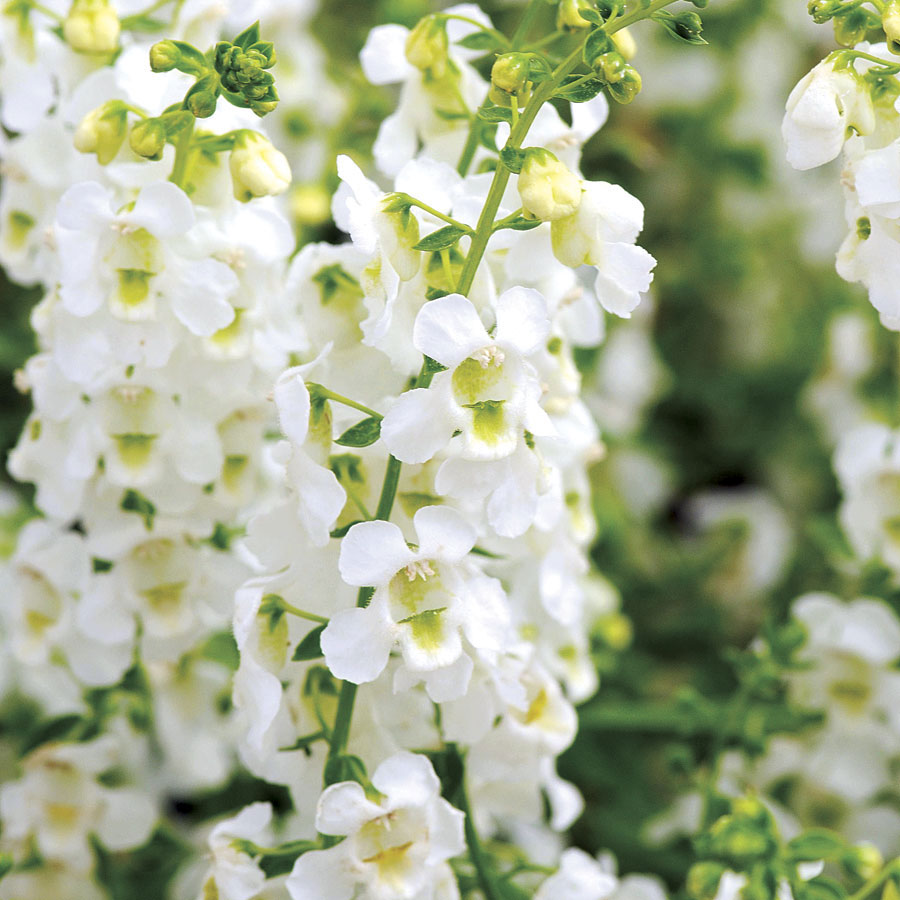
Use as you would Salvia in the hot, dry garden. It doesn't need to be deadheaded after bloom, fresh flowering stems simply arise to replace the old ones and it really attracts bees. Although it's quite drought tolerant, it also fares well in moist soils. And at just a foot high, it's ideal for containers.
Sow these pelleted seeds at about 74 degrees F. They'll sprout in less than a week, at which time you can grow them on at any soil temperature between 68 and 80 degrees F. Transplant into the sunny garden when they have at least 2 sets of true leaves and all danger of frost is past. They bloom 13 to 14 weeks from sowing.
Pelleted seeds for easy sowing.
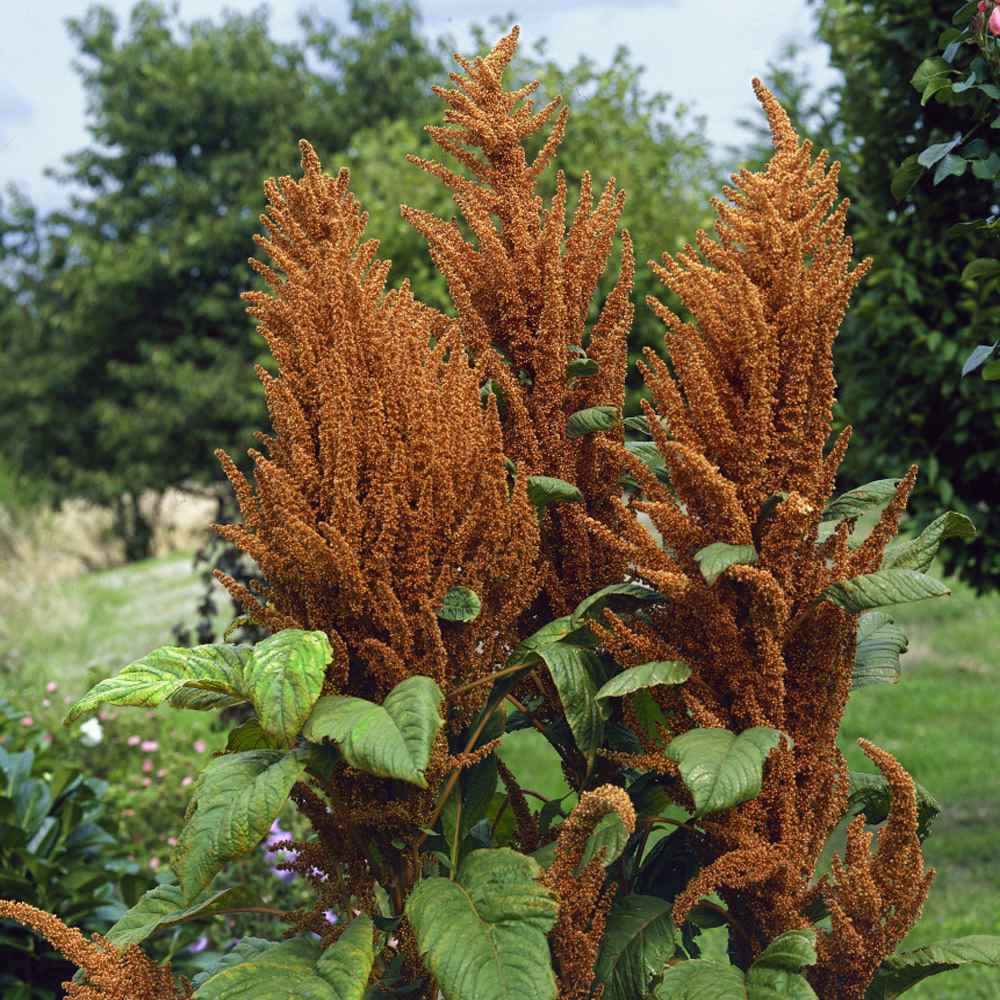
Many Amaranthus species have been used as a food source in Central America as early as 4000 BC. While Amaranthus Cruentus is no longer a staple food, it is still grown and sold as a health food in many areas of the world.
Hot Biscuits can grow up to 48 inches in height, and will bloom from early summer to fall. Flowers are used as a cut flower and are long-lasting in the vase.
Amaranthus plants have such gorgeous foliage and flowers that some gardeners will create a hedge or border with the plants. Hot Biscuits also attracts bees and butterflies!
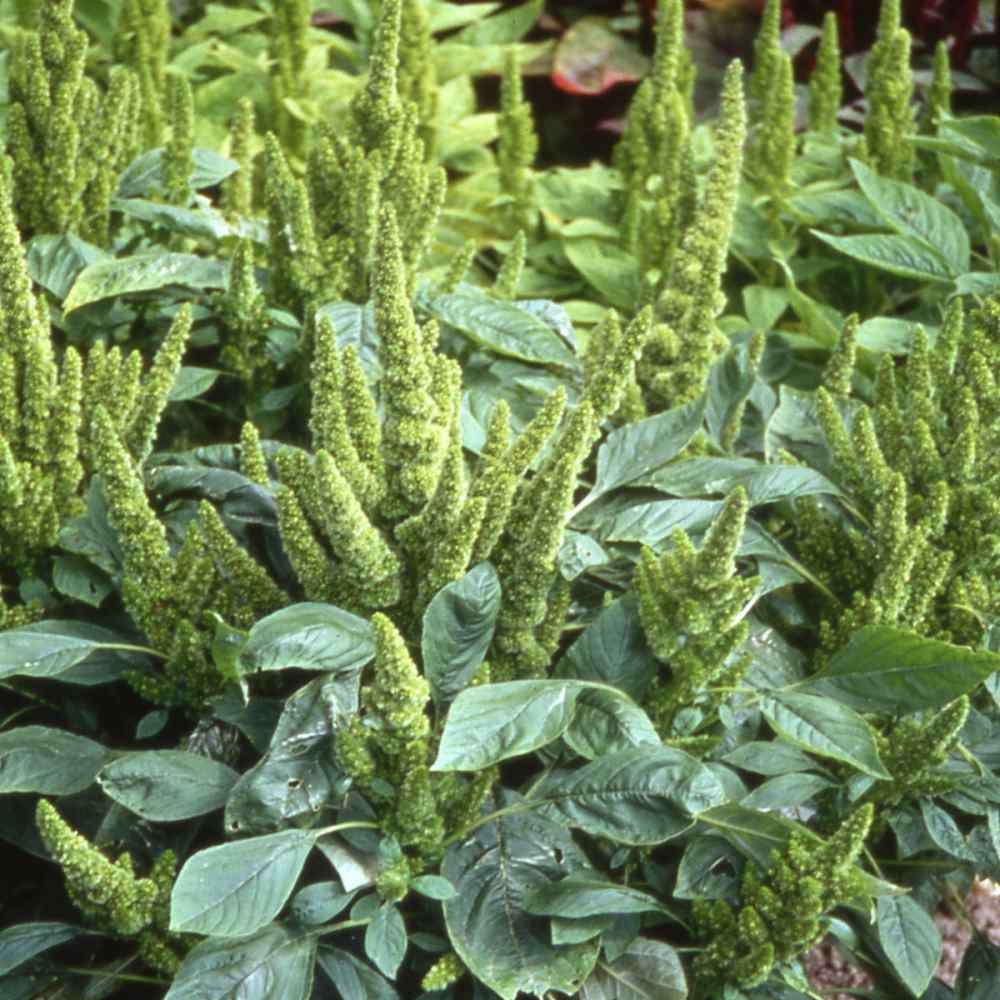
This Amaranthus is suitable for flower beds and does well in borders. The apple-green color goes well with most other colors and is a useful plant for filling in gaps in borders. It also is suitable for cutting and works well in arrangements.
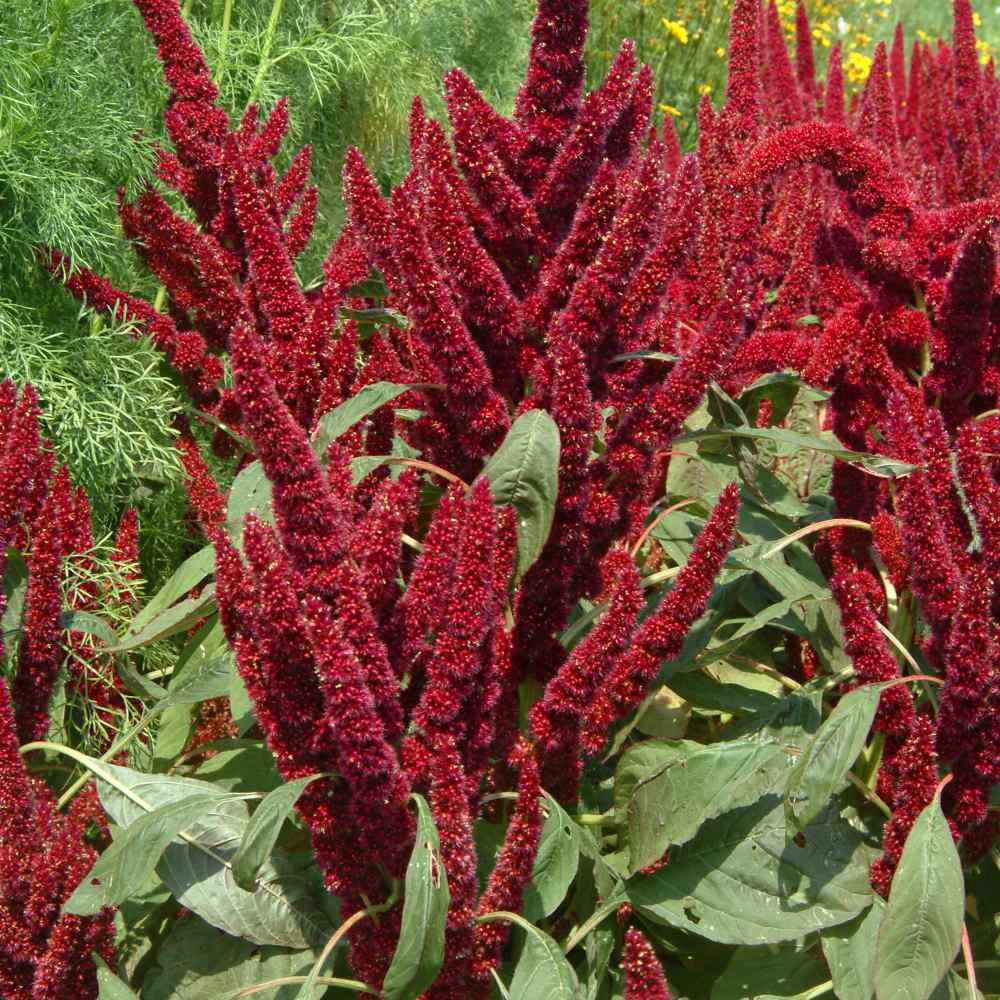
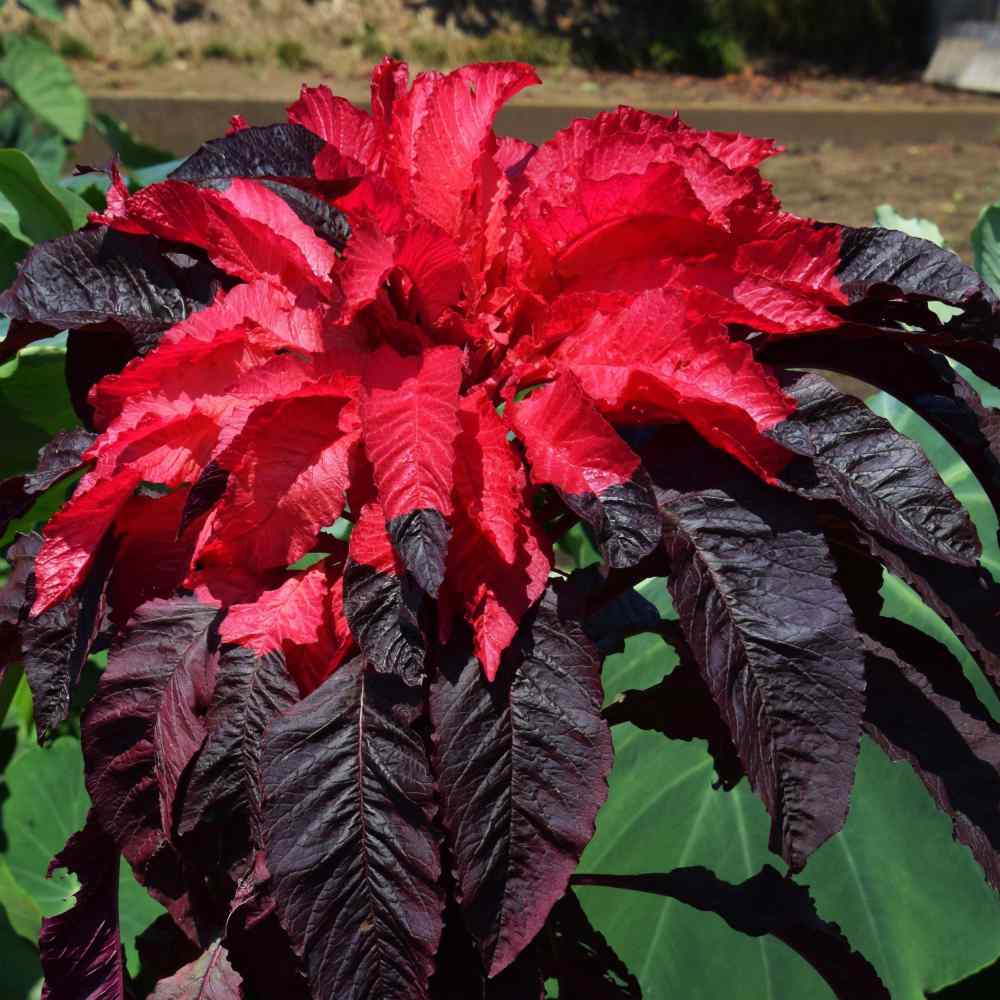
This spectacular foliage plant excels in heat and humidity, and provides color very early in the summer as soon as temperatures get warm clear up until frost season begins.
Early Splendor has gorgeous chocolate colored leaves that are topped with brilliant crimson. You can enjoy the Amaranthus plant in your flower garden, but it also makes a great cut flower for indoor flower arrangements.
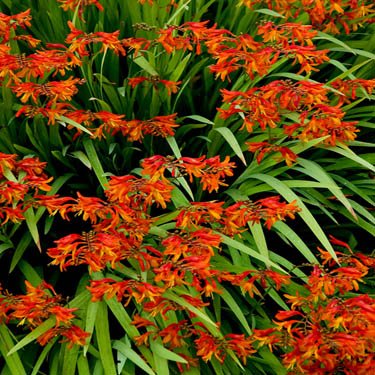
Crocosmia grow well in the flower garden and in containers on patios or decks. You should experience few problems with your Crocosmia. Use insecticide or fungicide, only if a problem occurs. Crocosmia are tough when it come to winter temperatures tolerating temperatures down to USDA Zone 5.
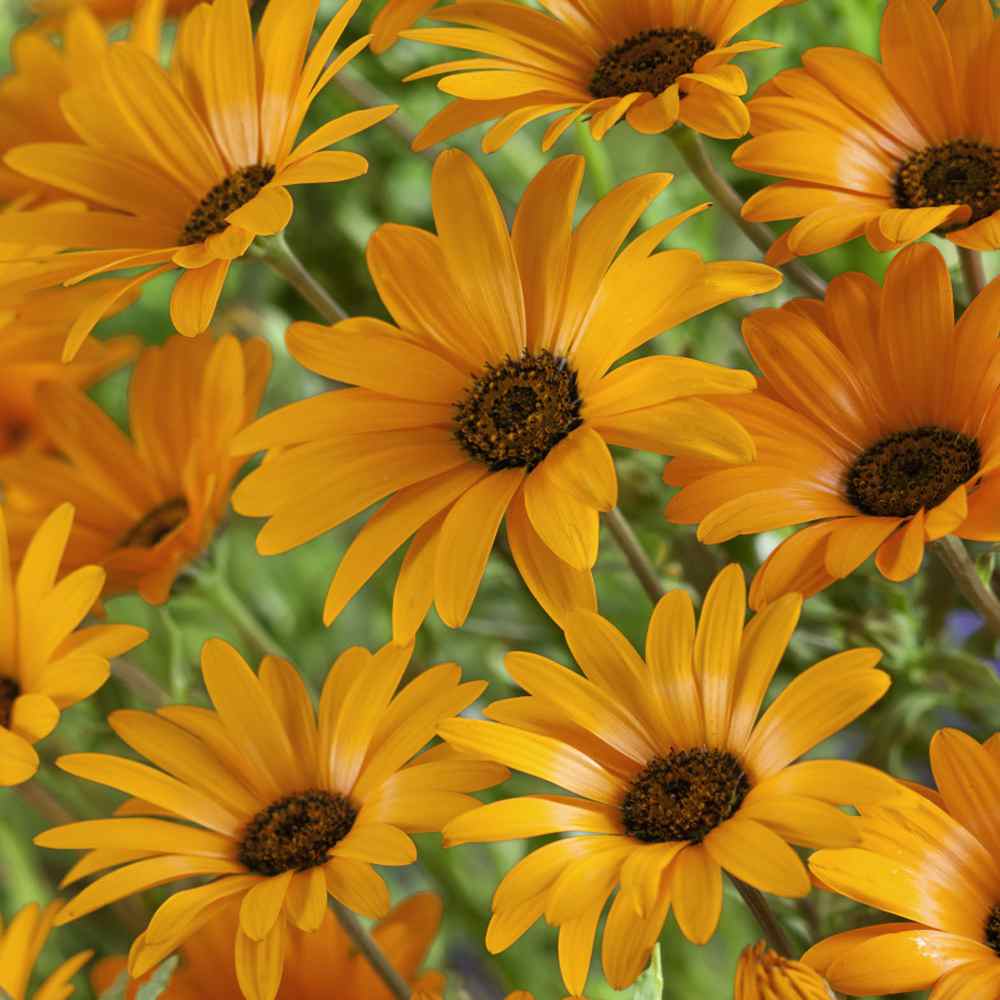
They leaves are slender, spoon-shaped, reaching up to 3 inches long. The stems are reddish in color and are often covered by the masses of leaves around them. Features remarkably big orange flowers that have orange centers. They need full sun to open and they always face the sun.
Grows about 12 inches tall, a perennial for zones 3-10.
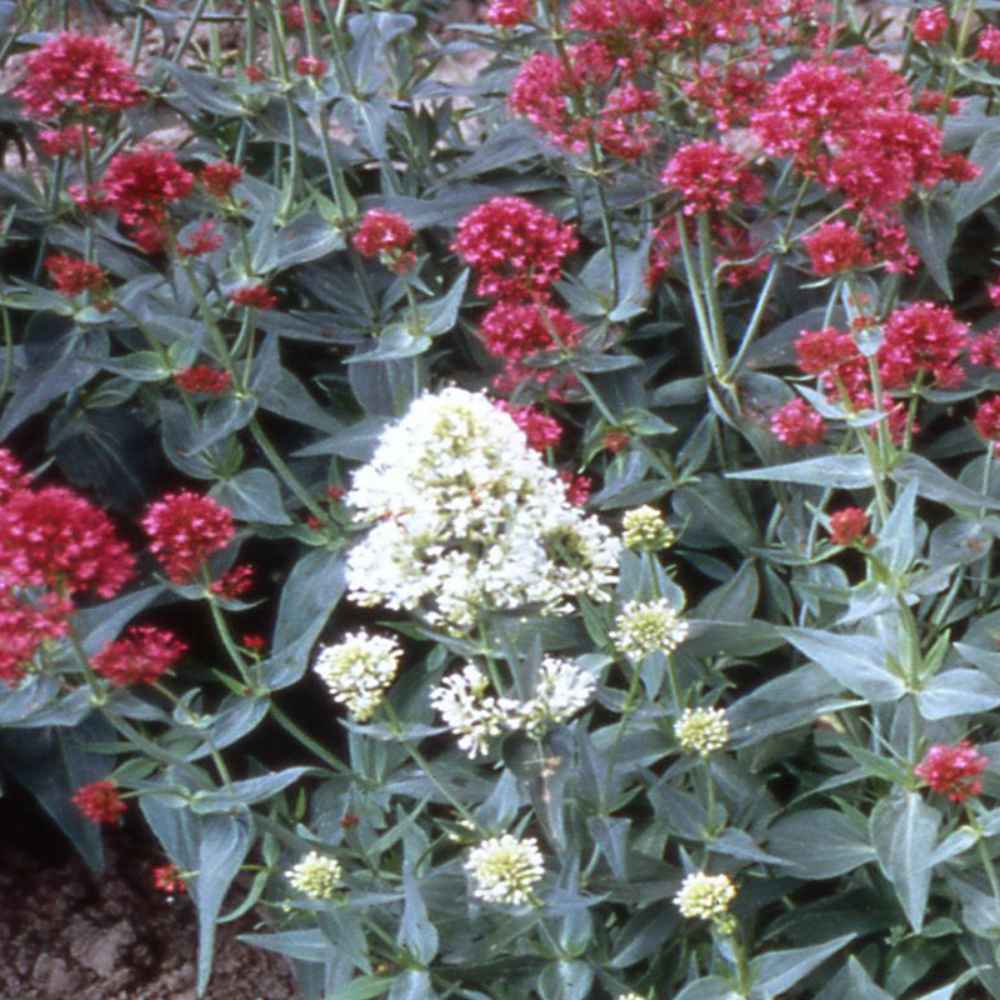
If you enjoy attracting wildlife to your landscape, starting Jupiter's Beard seeds is a sure way to have lots of these beautiful flowers that attract hummingbirds, butterflies and bees. This Centranthus Jupiter's Beard seed mix will have a beautiful display of blooms in shades of reds, rose, and white. Growing Jupiter's Beard from seed is very rewarding! You'll have flowers to enjoy in the garden and for cutting as well.
Jupiter's Beard care includes deadheading to keep the plant flowering later in the season as well as to keep the plant from self-sowing. Jupiter's Beard is also called Keys to Heaven, and the flower seeds can be started either indoors or directly outside. Perennial for zones 4-9, grows 24-32 inches tall.
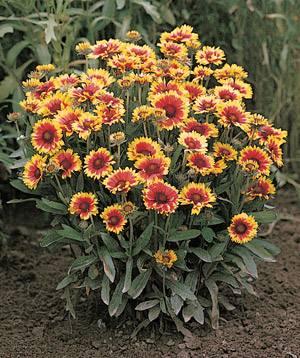
It is easy to grow and drought tolerant. The colorful flowers attract butterflies and beneficial insects. It is also known as 'Kobold', and 'Dwarf Goblin' Indian Blanket Flower. Deer resistant.
A tough, heat-loving perennial with dazzling red and bright gold blooms. The large bi-colored flowers cover the compact foliage mounds for months on end. Use in borders, adjacent to pathways, or spot into rock gardens. A perfect addition to patio containers for summer color. An herbaceous perennial. For zones 3-10.
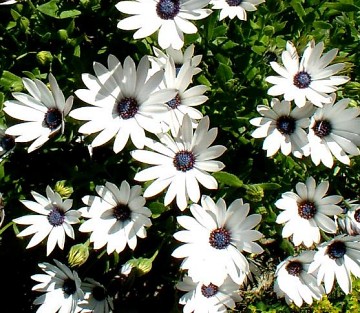
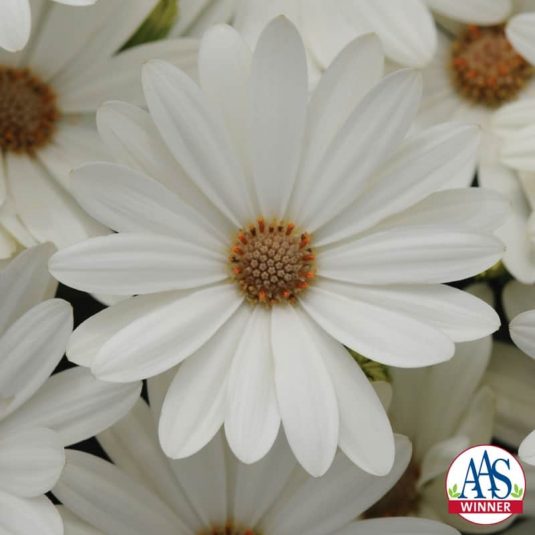
Even southern judges praised Akila’s ability to keep blooming in the heat and they also showed more drought tolerance than other osteos.
Akila is also the recipient of the Fleuroselect Gold Medal award for performance in European trials. Grows about 12 inches tall.
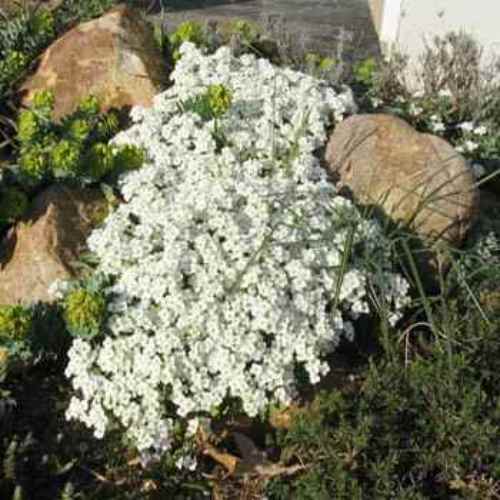
Rock Cress perennial ground cover establishes well from ground cover seeds. It works well as a ground cover for slopes. It is fairly drought tolerant once it is established. Use Rock Cress on a ledge of rock or a stone wall. As it matures and spreads, it will cascade over the stones. Rock Cress has attractive silvery-green evergreen leaves which hug the ground, about 6 - 8 inches in height, occasionally jumping up to 10 inches. In climates with mild winters, the leaves of this flowering ground cover plant hold their looks into winter. Trim back the Arabis Alpina plant after blooming to keep it neat and tidy.
A perennial for zones 4-8.
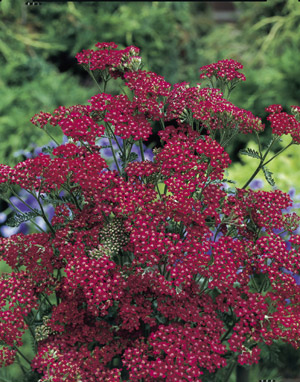
Drought tolerant for xeriscaping/waterwise design. For natural landscaping. Attractive for butterflies and other pollinators. Deer resistant. A second flowering after deadheading is possible at good locations.
Fleuroselect, will flower first year, prolific stems and deep cerise red flower umbels, for garden or cut flowers, grows 25" tall, hardy to zone 4.
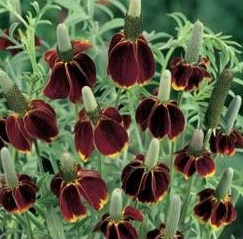
The Mexican Hat flower is a great source of nectar for beneficial insects, and the Ratibida plants are deer resistant.
Suggested Use: Prairies, roadsides, waste places, slopes. Miscellaneous: An excellent variety for cut flower arrangements lasting 5 to 10 days . Flower resembles a colorful Mexican sombrero, hence the name. Mexican Hat.
Good for zones 3-9, will grow 12-36 inches tall depending on conditions.
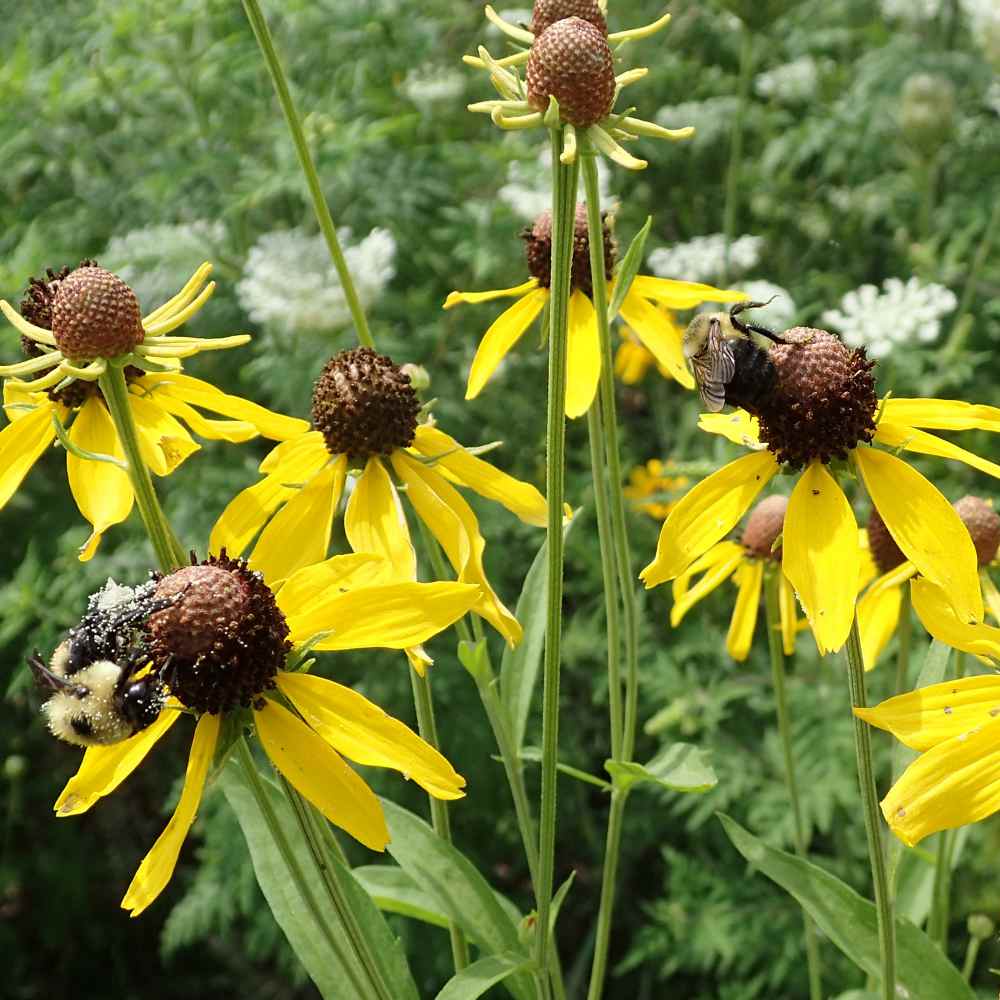
A perennial for zones 3-10, grows 36-60" tall.
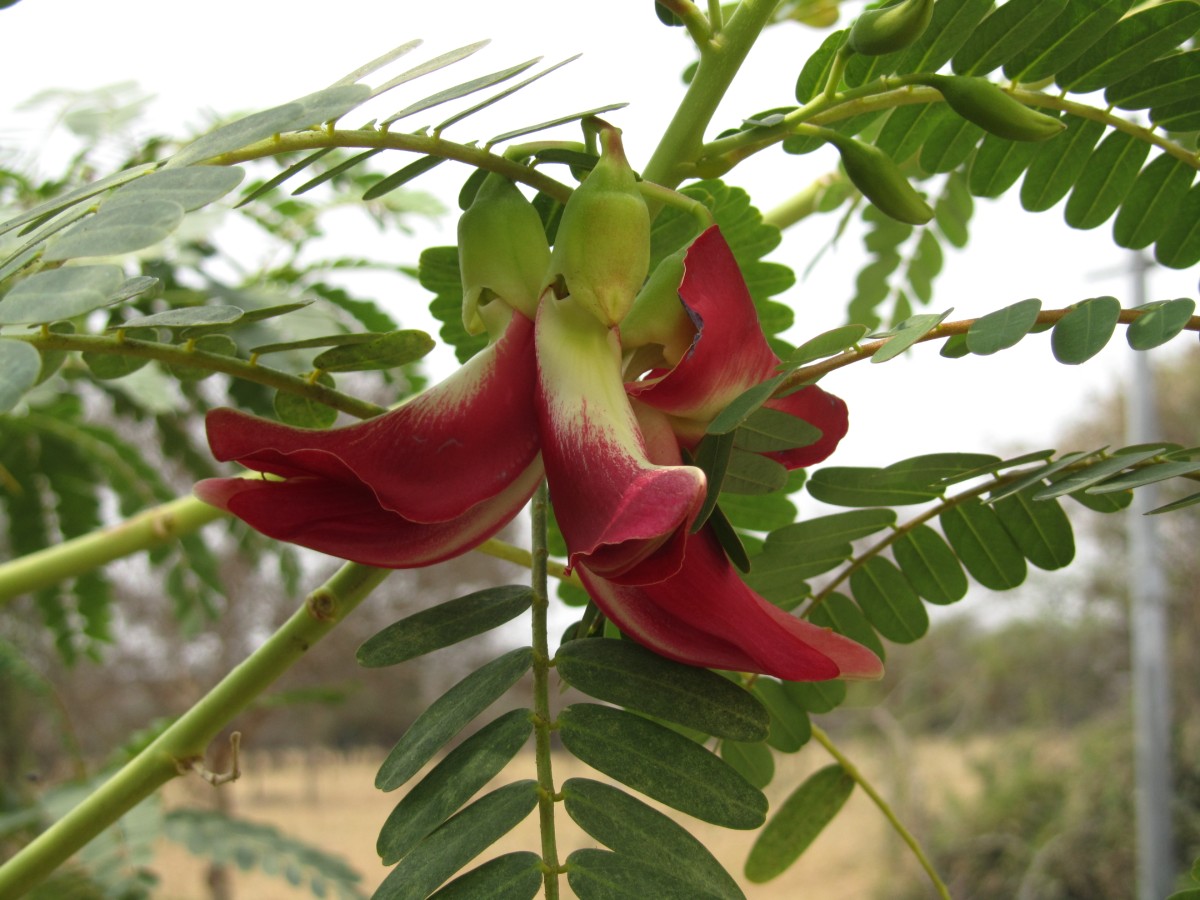
It is also known as the Vegetable Hummingbird Tree as it's leaves, flowers, and fruits can all be consumed. You cam enjoy them raw, or toss them into soups, stews, and stir fry dishes for extra nutritional value. It also has medicinal uses, beloved in Southeast Asia for teas and salves.
This is a somewhat tropical plant best suited for zones 9-11 outside, but it does very well inside in containers, and blooms well in pots and tubs. Will grow 40 feet tall in warm zones, but will limit it's size inside to the size container it is grown in.
It has fern-like fronds in a vibrant green color. Bright red flowers are followed by green fruit pods that grow up to 23 inches long, complementing the tree’s droopy canopy look. This beautiful tree will attract hummingbirds and pollinators, and its timber can even be used for woodworking. As a fully grown tree, it provides excellent shade for seating areas or low-growing plants at its base.
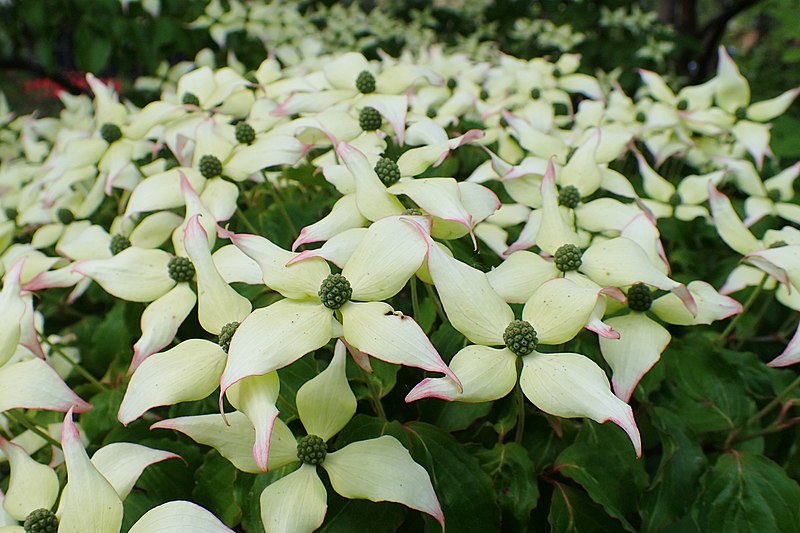
Kousa dogwood is an excellent small specimen tree for small lawns. Two outstanding characteristics are the four-petaled, white flowers that appear above the foliage in June and reddish-purple fall color. In the Midwest, this is a hardier substitute for the acid-loving flowering dogwood. The shallow root system will benefit with a layer of mulch to maintain a cool root environment.
Kousa Dogwoods are very showy for a long period of time as the flower bracts are showy longer than most flowers. They'll give you up to a month of display. The flowers precede the red fruit, which looks like a raspberry. Some people make jellies, jams and wine from the round red berries, or, leave the red colored fruit for birds! They'll be happy to snap them up for you without any fuss or muss.
best suited for zones 5-8.
Seedman Basic Info: Seedman Basic Info:
Firethorn is a large, evergreen shrub that is cherished for its spectacular fall and winter display of scarlet fruits and ability to withstand dry and droughty conditions. Shooting long lanky stems in all directions, firethorn typically grows into a tangled mound up to 10 feet in height and 12 feet wide. It is armed with sharp thorns that hide among the dark,glossy green leaves. Clusters (corymbs) of small white flowers appear in spring. These are up to 2 inches across and are borne close together creating the appearance of nearly solid surface of flowers. In fall the 1/4 inch berries begin to ripen, their color mellowing from green to shades of red, orange, or yellow. These persist through winter and into early spring depending on climate and appetite of the local bird population. Under bright sunny conditions the berries are plentiful but expect smaller crops in shadier situations. The color of both leaves and berries tends to be darker in cooler climates. Culture: Not particular about soil and requires little or no supplemental fertilization. Landscapers love the firethorns for their fast rate of growth and ability to withstand drought and neglect. The shrubs ruggedness and disease and pest resistance makes this plant a very popular item in commercial landscapes. Seedman Basic Info: Perennial for zones 3-9, grows about 28 inches tall. Cannot ship to HI
The beautiful orange and black Monarch butterfly is one of the best known threatened butterfly species in North America. According to some of the latest surveys over 90% of the population has disappeared in the last decade mostly due to loss of habitat. Sprawling urban developments and intensive farming techniques mean fewer uncultivated margins where the milkweed species can thrive and provide habitat for the Monarch during its egg and larvae/caterpillar stages.
This mix provides five species of milkweed (Asclepias) as well as a Butterfly Mixture that provides a variety of nectar-producing flowers that supply food for adult butterflies.
Milkweed (Asclepias species) is the only food source for Monarchs in their caterpillar state, and any garden devoted to butterflies will have Milkweed in abundance. This mix offers a bit of it as well, but it supplements with greater percentages of many other nectar sources (often more difficult for Monarchs to find) for spring, summer, and fall.
This mix contains: Bishop's Flower, Black-Eyed Susan, Butterfly Milkweed, California Poppy, Candytuft, Cornflower, Dwarf Cosmos, Lance-Leaved Coreopsis, Dwarf Godetia, Indian Blanket, New England Aster, Plains Coreopsis, Gayfeather, Purple Coneflower, Perennial Lupine, Purpletop, Shasta Daisy, Siberian Wallflower, Sweet Alyssum, and Sweet William Pinks.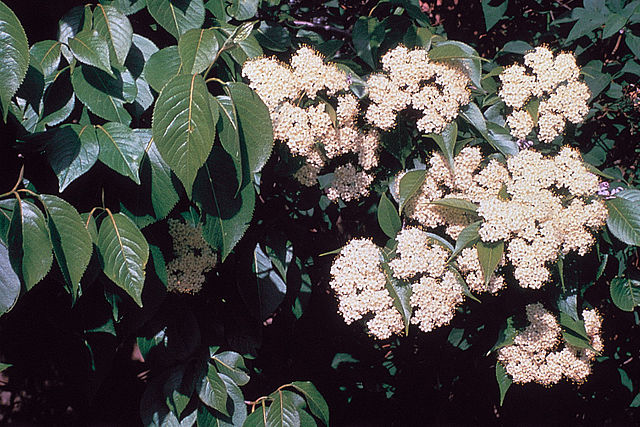
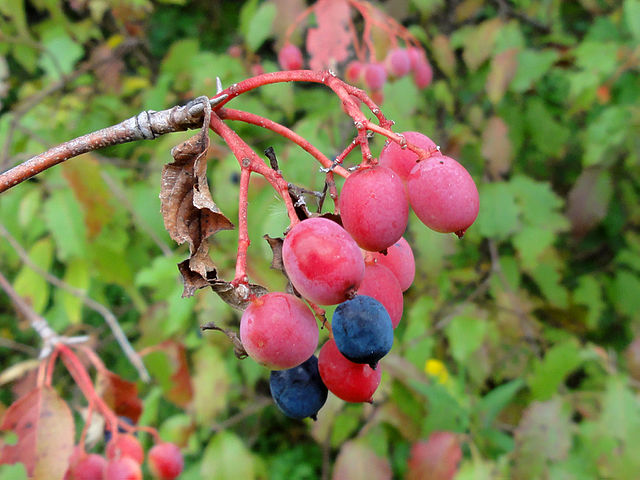
Viburnums offer excellent support for birds and pollinators, and serve as host plants to numerous butterflies and moths. They tend to flower profusely whether or not pollination occurs. However, poor fruiting will happen if there is only one Viburnum available, so try to grow at least two somewhat close together. The edible berries can be used to make jams and jellies.
It can grow 15 to 20 feet tall and should be spaced about 15 feet apart. Hardy for zones 2-8.
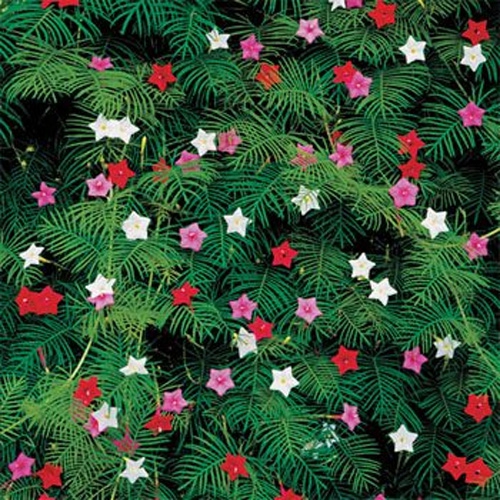
Cypress Vine plants grow well in full sun or partial shade. They are not picky about the quality of soil, but it does need to have good drainage. Once the Cypress Vine Star Glory plant is established well, it can withstand periods of drought. However, it will grow faster and have more blooms with regular water. Deadheading the spent blooms will encourage a prolonged bloom season. Blooms will usually start the first of summer and continue until fall. In some frost free areas, Cypress Vine will grow as a perennial.
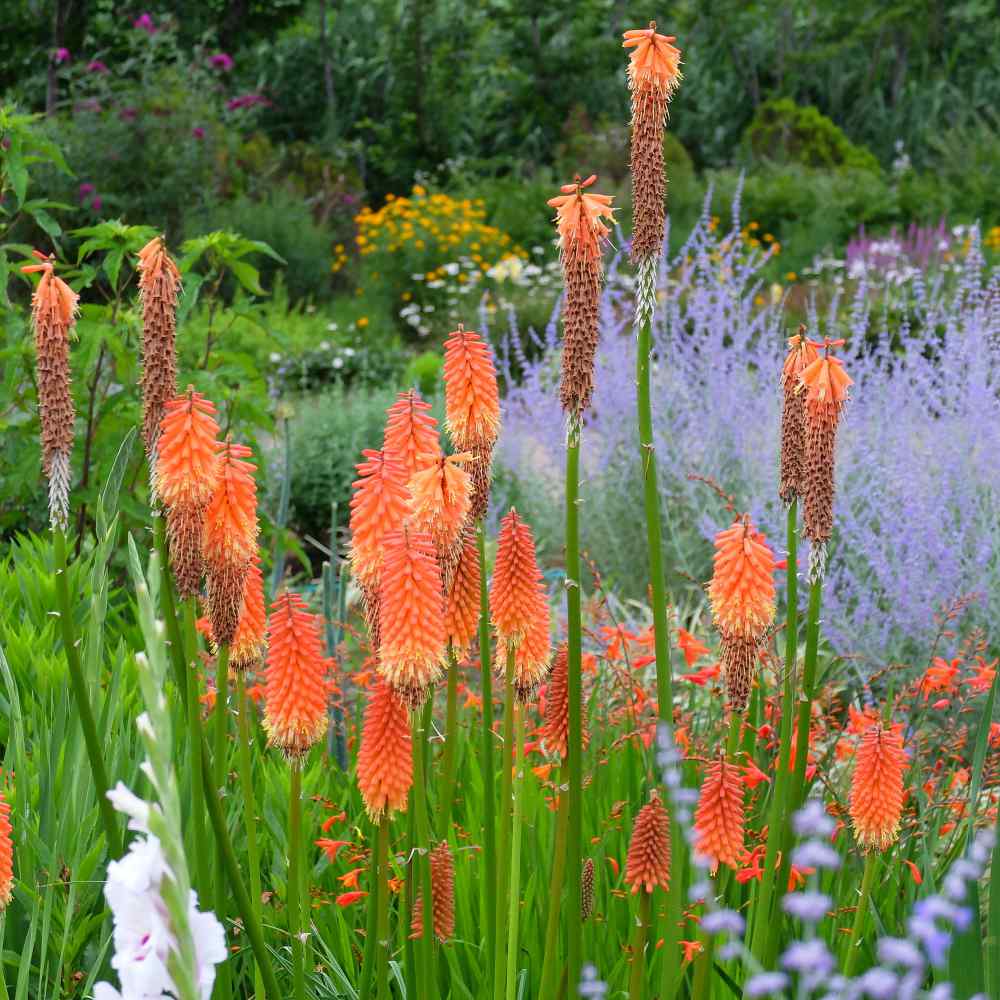
Red Hot Poker, with its sweet nectar and bright orange flowers will attract bees and butterflies, and will bring in many different birds to your garden!
A perennial for zones 5-10, will grow 36-48 inches tall.
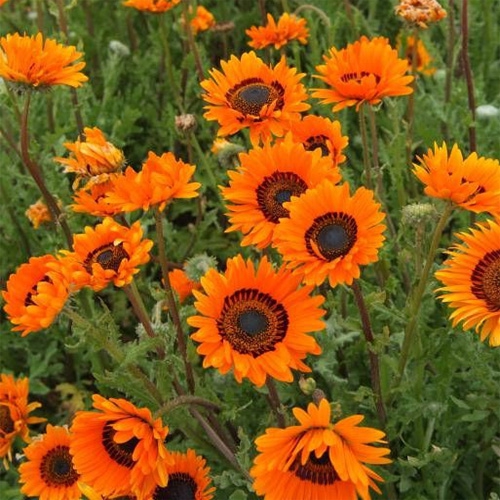
Start seeds indoors in late winter for the earliest blooms. For areas with a longer bloom season, prepare a weed free seedbed outdoors, and sow the seeds directly once frost danger has passed. Thin the seedlings to 12 inches apart. Venidium orange flowers are easy to grow and maintain. Provide full sun, regular water, fertile, well-draining soil, and these flowers will not disappoint you. Care includes deadheading the spent blooms to promote continual flowering. May grow as a perennial in zones 10 and 11.
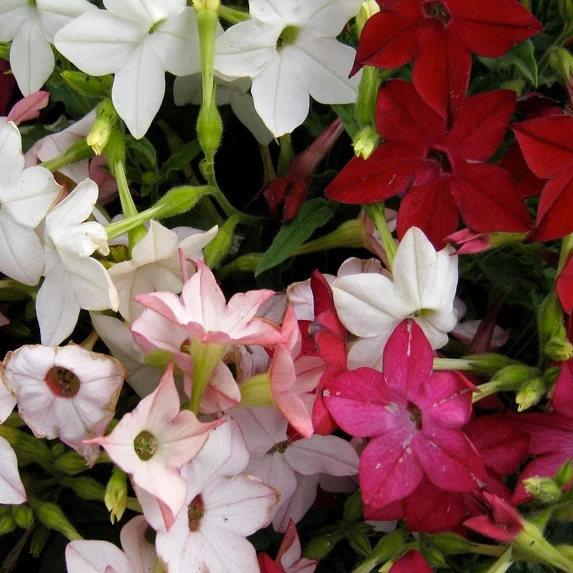
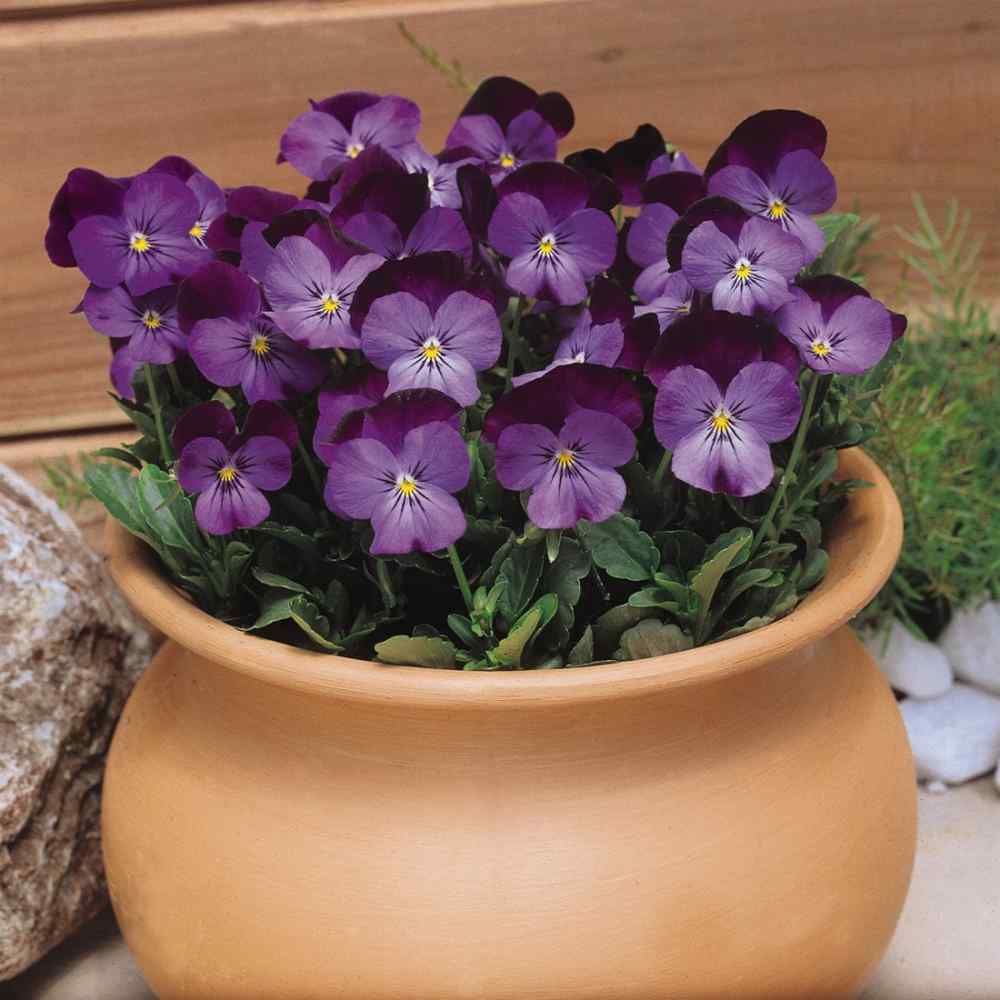
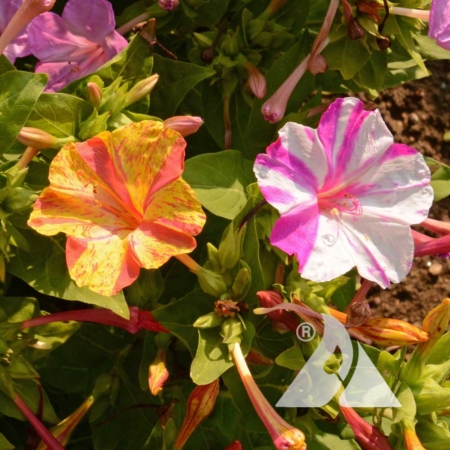
A single plant produces myriad 1- to 2-inch trumpet-shaped blooms in all combinations of raspberry, lemon-yellow, orange-golden, and frosty-white. Grows from 12 to 36 inches tall.

From midsummer until frost, butterfly bush earns its name as hordes of winged beauties flit from flower to flower in search of nectar.
Fragrant, shades of pink, purple, white, first year flowers in summer, the cornerstone of a butterfly garden. Perennial to zone 5. Grows about 4 feet tall.

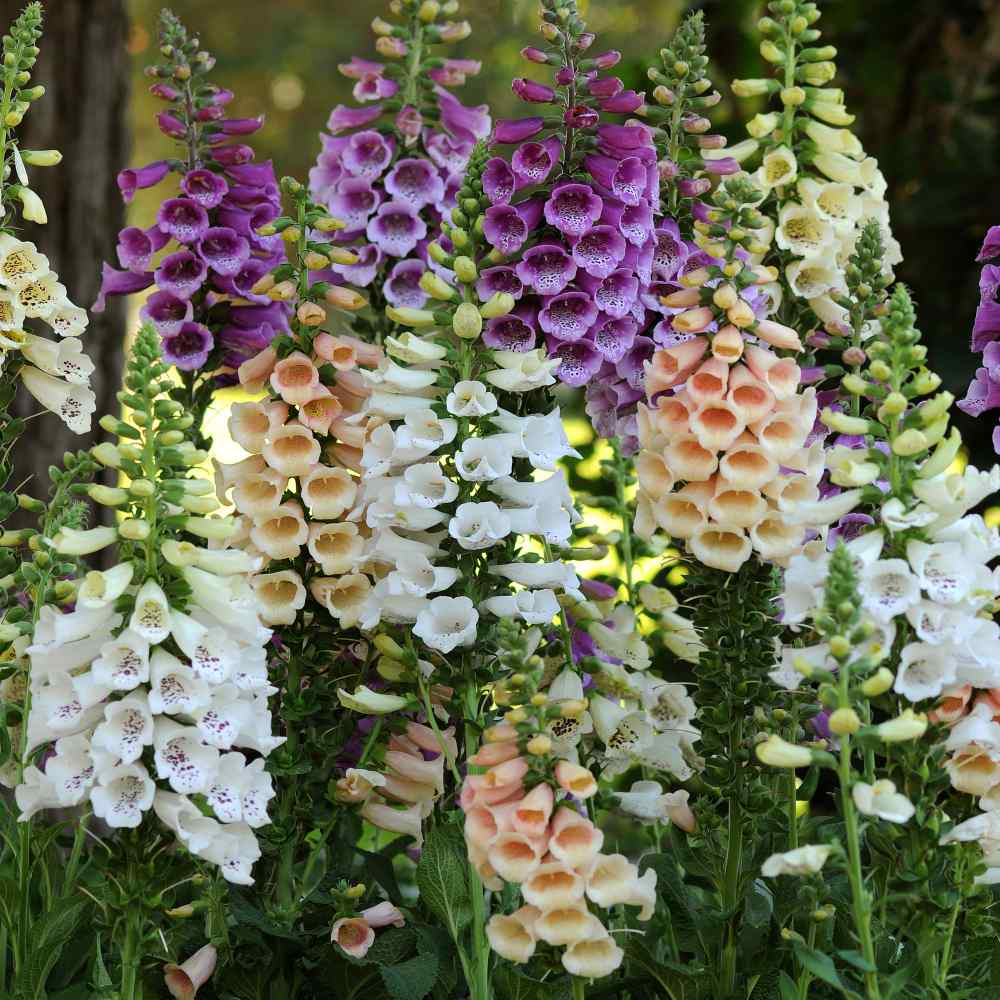
Grows about 24 to 48 inches tall, will germinate in about 20-40 days depending on soil and weather conditions, germinates best if soil temperature is in the 50-60 degree range.
Surface sow,do not cover seeds, blooms from June to September. 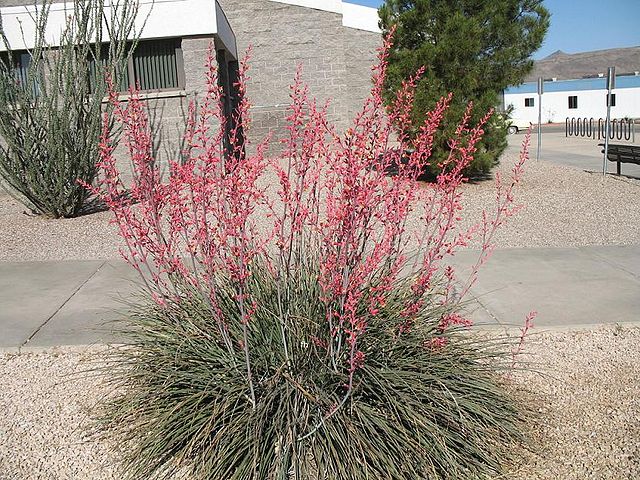
Hesperaloe parviflora has narrow evergreen leaves with a fringe of white threadlike hairs along their edges and grows in clumps 3–6 feet high and wide. Red or yellow tubular flowers are borne on branching flower stalks (inflorescences) up to 5 feet tall from late spring to mid-summer.
This species has become popular in xeriscape landscape design for public and private gardens in California and the Southwestern United States. The plant's qualities include drought tolerance, heat resistance, low maintenance needs, hummingbird attracting flowers, and an architectural form. It also is a spineless alternative to Agave and Yucca horticultural species.
Hardy to well below 0°F some say as low as -20°F (USDA zone 5). It is a good clean plant for desert and succulent gardens, planted in masses or used in pots.
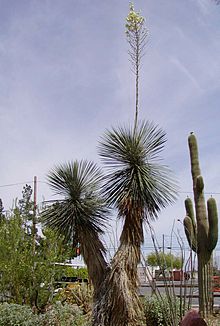
Cattle relish the young flower stalks, and chopped trunks and leaves serve as emergency food during droughts. Indians ate the flower buds, flowers, and young flower stalks of this and other yuccas, either raw or boiled.
Yucca elata is a common, widespread and quite distinctive species, growing tall and eventually branching, forming tree-like plants up to 15 feet high, resembling the Joshua tree through generally smaller, with longer leaves and fewer branches. Ranges of the two overlap in southwest Utah and northwest Arizona, but the soaptree yucca is more common further east, in the grasslands and foothills of central and southeast Arizona, and the flat plains of New Mexico.
Leaves are pale or bright green in color, thin and flexible, up to half an inch across (slightly wider in the middle) and between 10 and 35 inches long. The edges are white, as are the short terminal spines and the long, curly filaments that grow most densely towards the center. Plants are old before they branch, hence most specimens have only one stem; the (usual) maximum number observed is seven. Dead leaves hang back against the stem and remain there for many years. Flower clusters are borne on stems rising 2 or 3 feet above the leaves. Flowers are pendant, globular or bell-shaped.
Hardy to zero degrees, also makes a great container plant when young.
Zones 6-10.
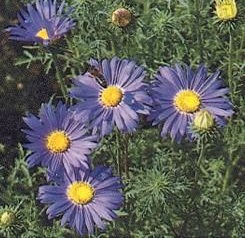
Excellent plant for borders, roadsides, xeriscapes, rock gardens.
Adaptable to a variety of garden conditions, it is drought-tolerant when established and an excellent choice for xeric gardens, natural or prairie gardens, meadows, hillsides, or hard to maintain areas. The plant often reseeds and grow in following years. You will enjoy its cheerful beauty and the way it attracts bees and butterflies.
For zones 3-10.
Grows about 12 to 18 inches tall, will germinate in about 15-45 days depending on soil and weather conditions, germinates best if soil temperature is in the 56-65°F range.
Cover seeds about 1/8" deep, blooms from May to September. 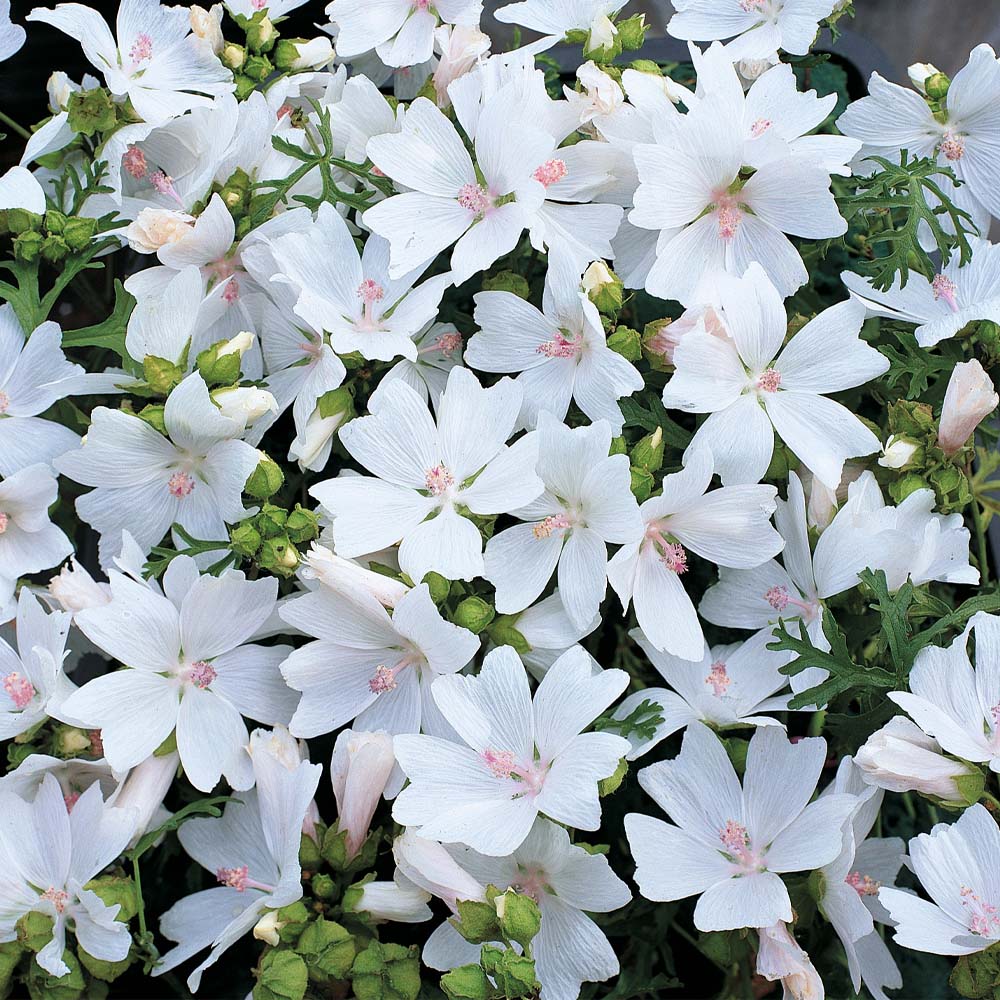
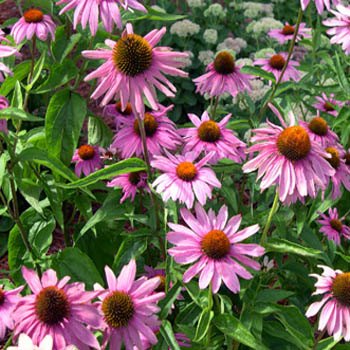
Plants are heat and drought tolerant, and blooms are used for cut and dried flower arrangements. The drug Echinacea, used to boost the immune system, comes from this genus. Divide clumps when they become overcrowded (about every 4 years). Plants usually rebloom without deadheading, however prompt removal of spent flowers improves general appearance. Freely self-seeds if at least some of the seed heads are left in place. Best suited for zones 4-9.
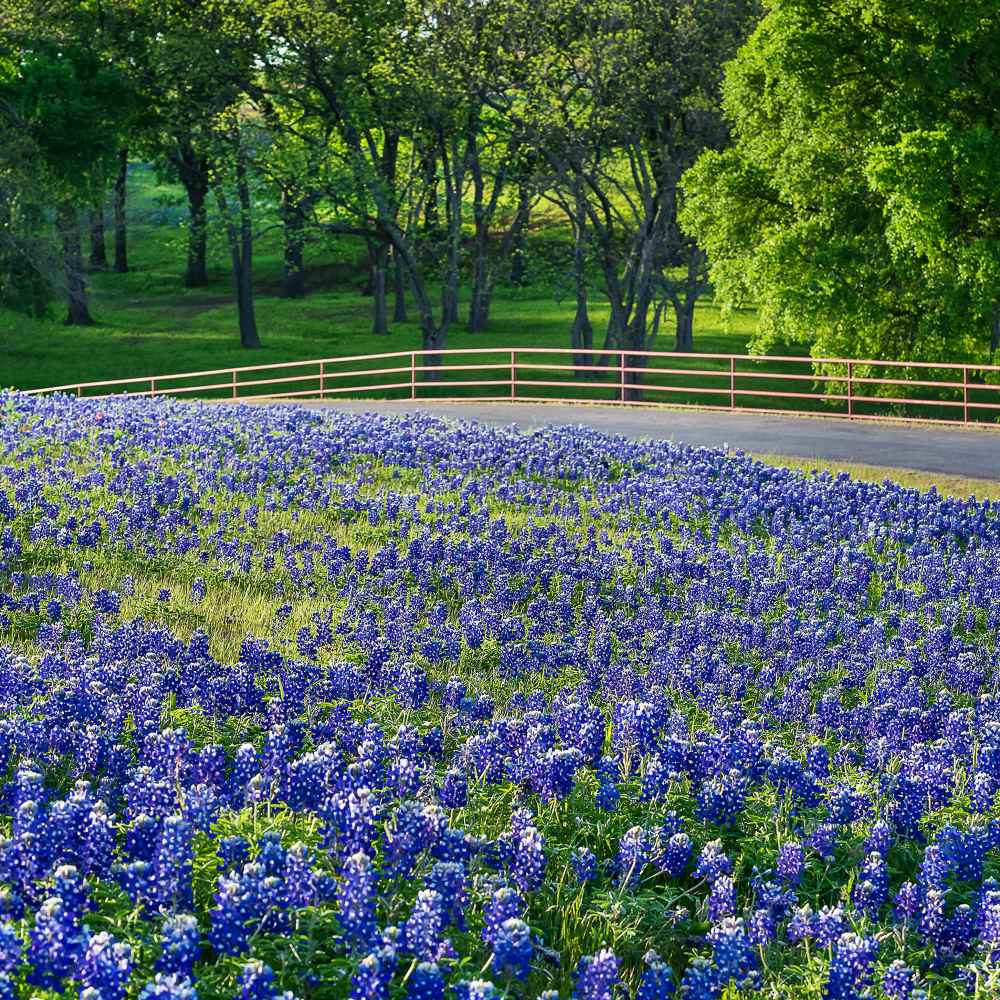
Low growing but prolific blooming, Texas Bluebonnet requires some patience, but little maintenance, once established. The same toughness and tenacity that makes this little Lupine the perfect representation of the Lone Star state also makes it slow to germinate and bloom--but once it does you will not be disappointed!
Bluebonnet flowers are prolific bloomers in early spring and are known for attracting butterflies and a variety of bees, including honeybees.
How To Grow Texas Bluebonnet From Seed: It is recommended to soak Texas Bluebonnet seeds in tepid water over night before sowing outdoors. After soaking, sow the Texas Bluebonnet wildflower seed directly into prepared soil that is loosened and weed free. A late fall sowing is recommended.
To keep Texas Bluebonnet wildflowers year after year, allow the seed pods to form and drop their flower seeds. Texas Bluebonnet Lupine is moderately deer resistant and the flowers attract butterflies. An annual that will grow in zones 3-10.
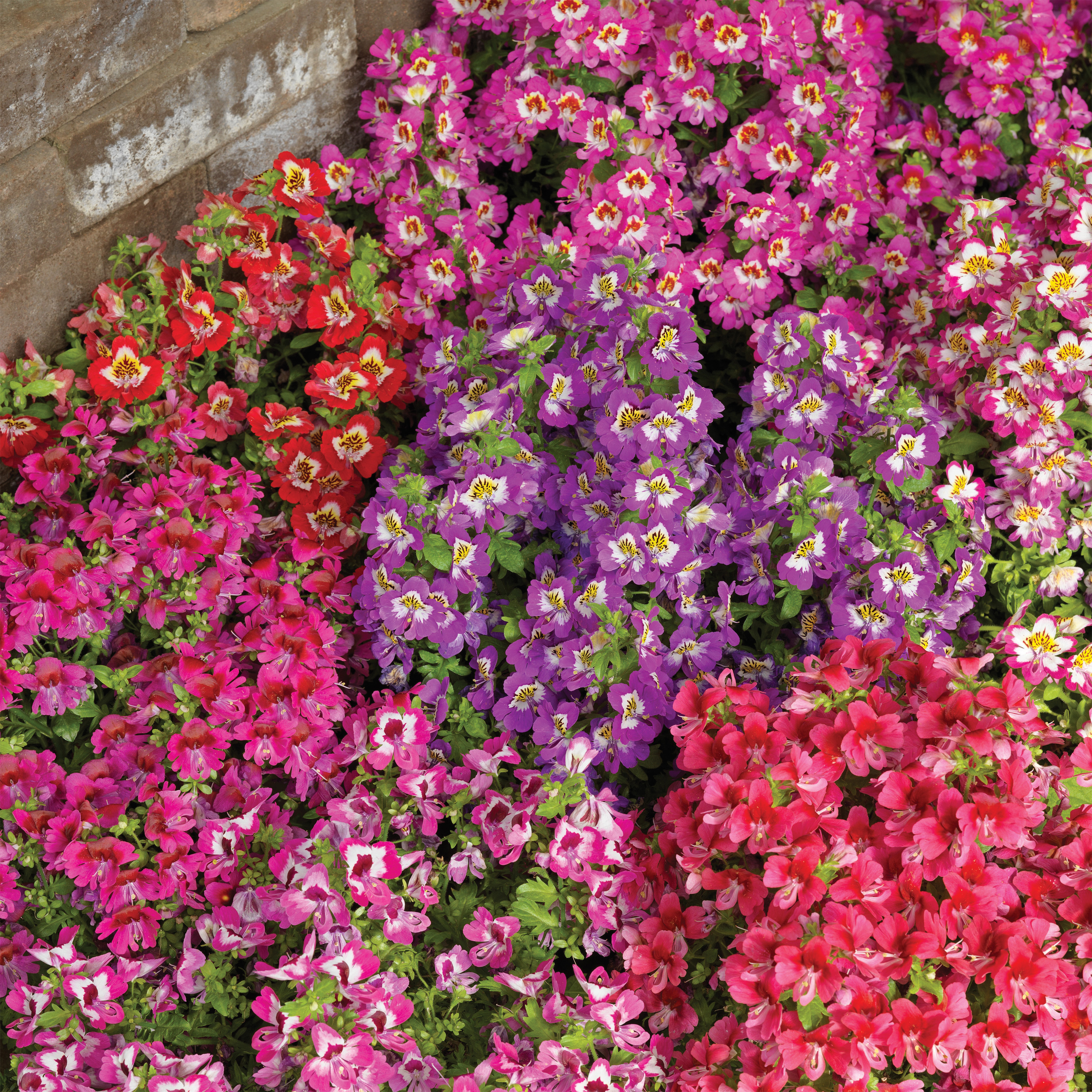
Schizanthus can be slow to germinate but you will be rewarded with a dazzling display of vibrant colours in reds, pinks, blues and lavenders all with a central golden eye. This strain is more compact and less lax in habit than most, and ideal for pot growing.
Butterfly Flowers are ideal for mass planting, spots of color in the flower border or in containers. Schizanthus plants are showy and exotic looking adding lots of beauty wherever they are grown.
Seed are not difficult to establish. Start the seed indoors 6 - 8 weeks before the end of frost season. Lightly cover the flower seeds with soil. It's recommended to cover the starter trays with plastic to help hold moisture in. Water from underneath. Once seedlings emerge, remove the plastic. The Schizanthus plants can be transplanted once they have their 2nd set of true leaves. They prefer a full sun to partial shade setting.
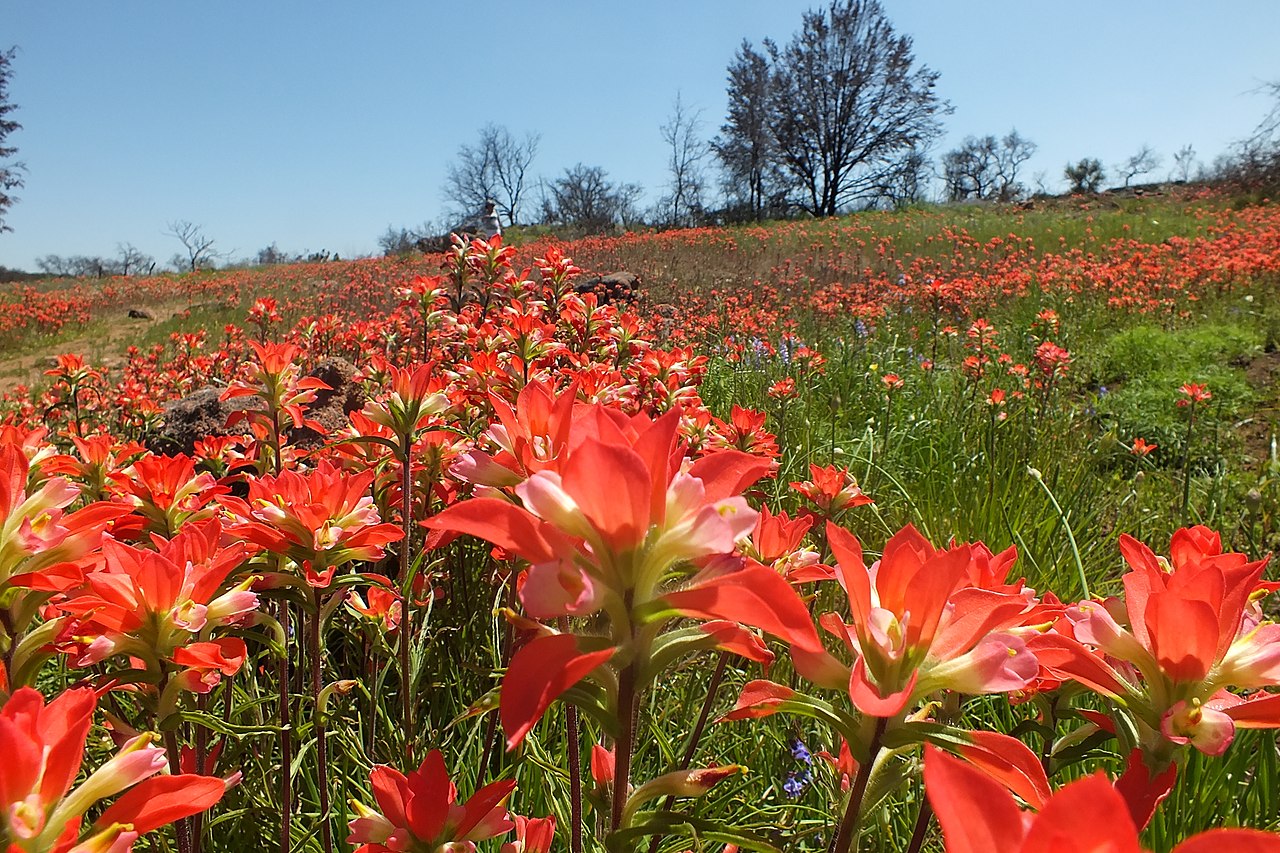
Suggested Use: Gardens, roadsides, open meadows, mixtures. Creates ribbons of color for miles along Texas highways in the spring.
The Chippewa Indians are know the use Indian Paintbrush as a medicine to treat rheumatism and as a bath rinse to make their hair glossy. Both applications are useful due to it's selenium content.
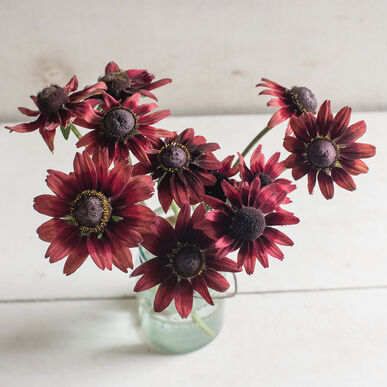
Creates plenty of drama without overpowering companion plantings and cut flower arrangements. Plants are heat tolerant and prolific, producing masses of color from late June until early frost.
Will flower at 12" when grown in pots, but becomes truly statuesque in the garden.
First red wine-colored Rudbeckia from seed.
Compact plants are outstanding in the garden or in large containers. Combine Cherry Brandy's 3–4" flowers with rudbeckia of other colors, or do a dramatic mass planting for red blooms all summer. Also known as blackeyed Susan and gloriosa daisy. Tender perennial in Zones 9–10. Ht. 20–24".
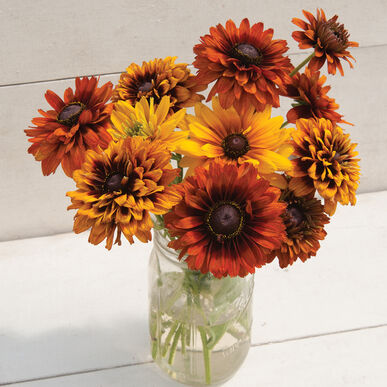
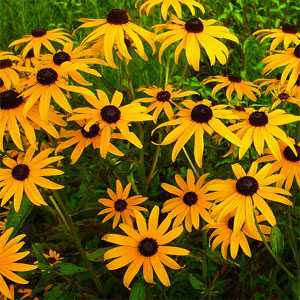
Grows perfectly in gardens, in borders and in flower beds, and it is a great summer time bloomer. Butterflies of many species are attracted to its bright blooms. It grows in all regions of North America in any soil from sand to clay, but it must have full sun. Black-eyed Susan care includes deadheading to prolong the bloom season, but the plants will re-seed themselves readily if you leave a few blooms to go to seed.
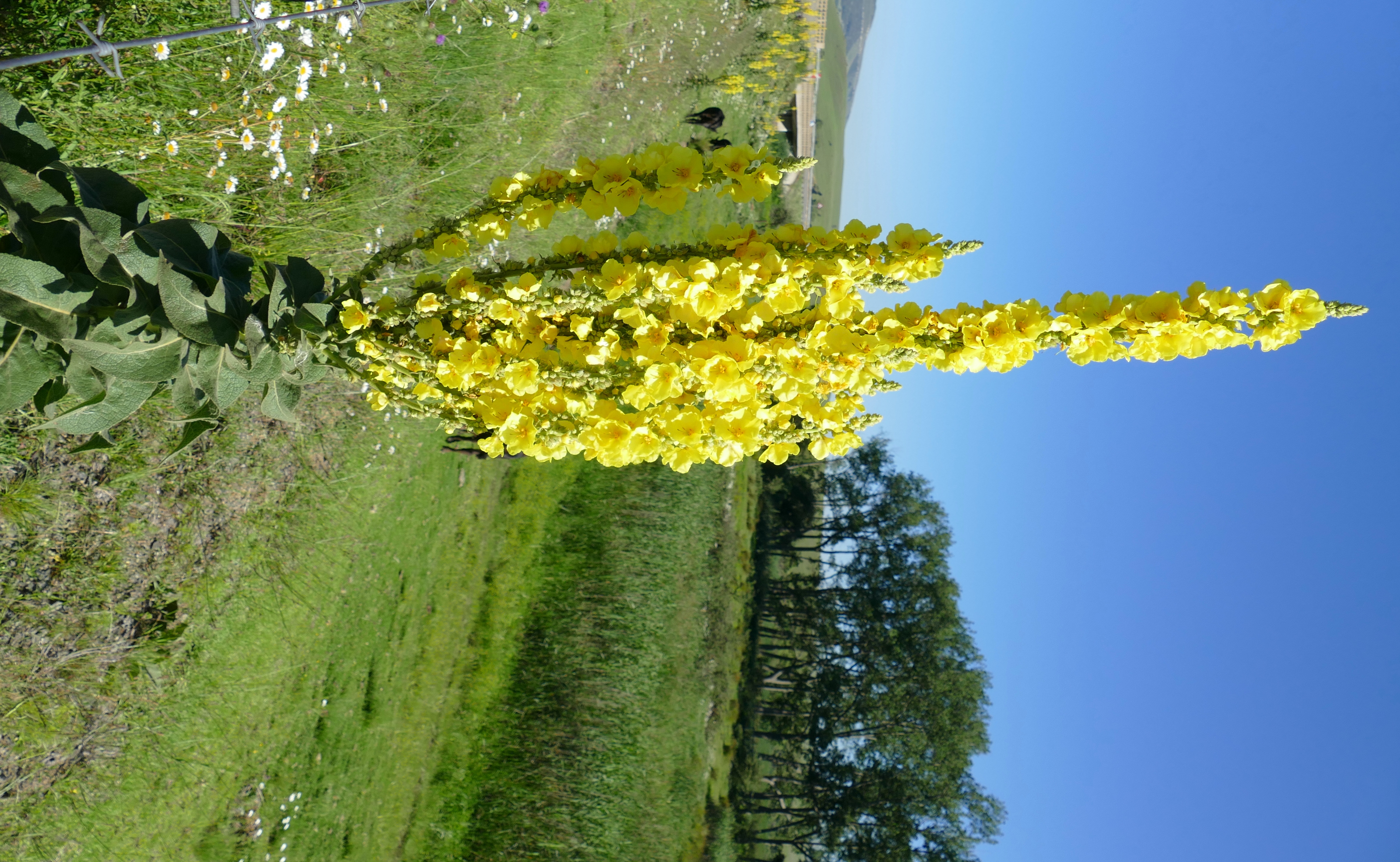
It is a spectacular tall plant great as a border backdrop or in a naturalized setting. Attracts bee's and butterflies has well known medicinal properties. Flowers early spring through late summer
Cannot ship to CO, HI, SD
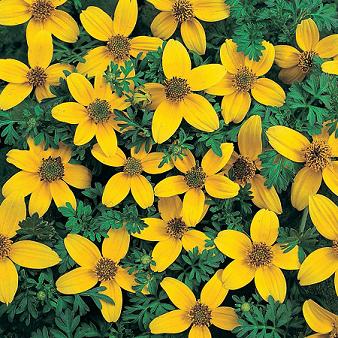
Fleuroselect, Single flower, brilliant gold, butterfly attractor, fine for basket or container or tumbling over low wall, this is a very versatile plant. Annual growing 12" tall.
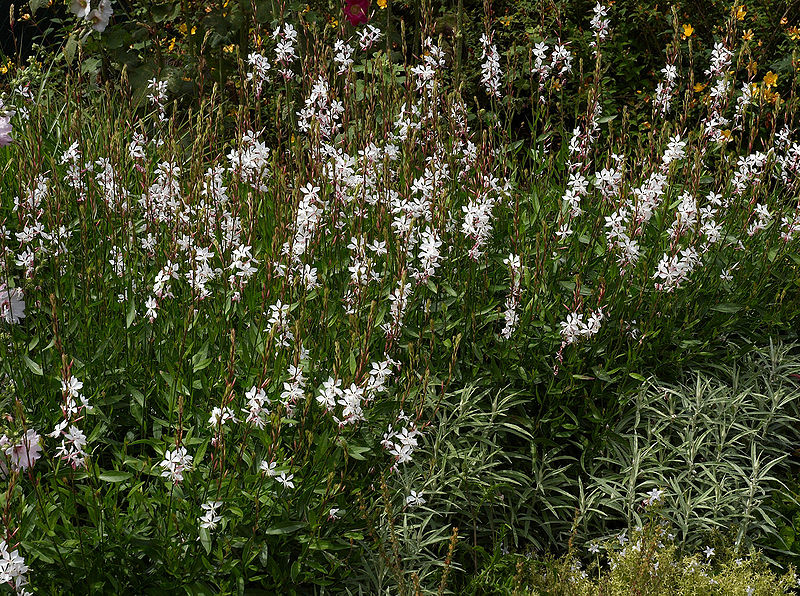
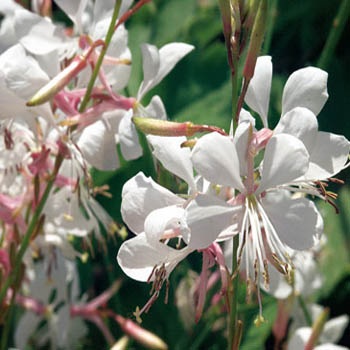
Perfect for growing in a cottage garden or informal herbaceous border. Its growth habit makes it particularly useful for filling in gaps in the border and linking other planting groups together. It has a long flowering season that lasts from early summer well into autumn.
Excellent plant for attracting bees. The flowers are pollen rich over a long period.
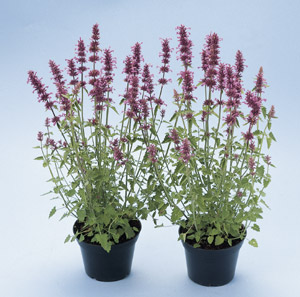
Butterflies and hummingbirds find this plant hard to resist! The abundant flowers are presented atop very well-branched stems lined with small, aromatic, grey-green leaves. The plants are very uniform and compact with a terrific upright habit.
This plant is perfect for growing in rock gardens, flower borders, cottage gardens, herb gardens, butterfly gardens, and large containers.
Pink Pop is a very tidy Agastache, staying in a rounded 18 inch mound. It has tall soft pink spikes that are very attractive to hummingbirds. It will bloom June-Oct with deadheading. The foliage has a spicy scent and the flowers are also spicy flavored, making them useful as garnish in salads.
It needs good drainage and prefers full sun, although will do well in hot areas with a bit of afternoon shade. This variety is seed grown, so dead heading early will assure that the plant doesn't self sow. It is a vigorous rebloomer if deadheaded.
Long flowering pink spikes, flowers summer first year, well branched, fragrant ( delightful old time flower garden fragrance ), for pot or garden. Flowers in 12 weeks. Grows about 14" tall. Good cutflower and potpourri plant. Perennial plant hardy to zone 6.
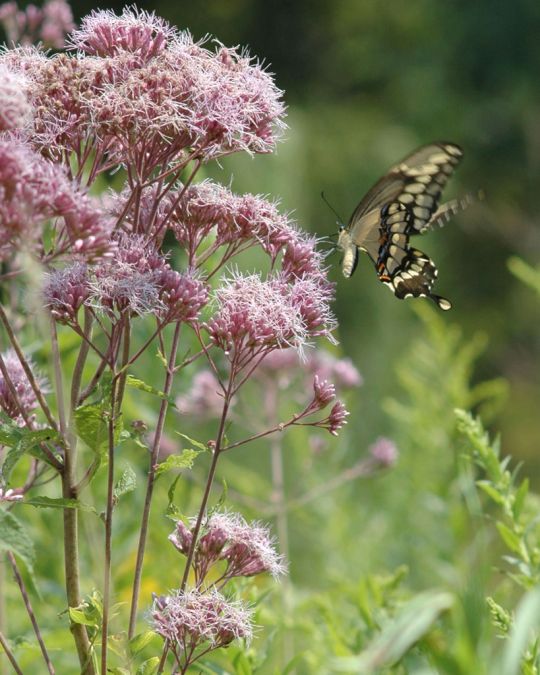
Also called Spotted Joe Pye Weed, it is best planted in full to almost-full sun and rich, moist soils. It will spread so should be planted with caution in small landscape situations.
A perennial best suited for zones 3-8. Needs cold stratification before germinating.
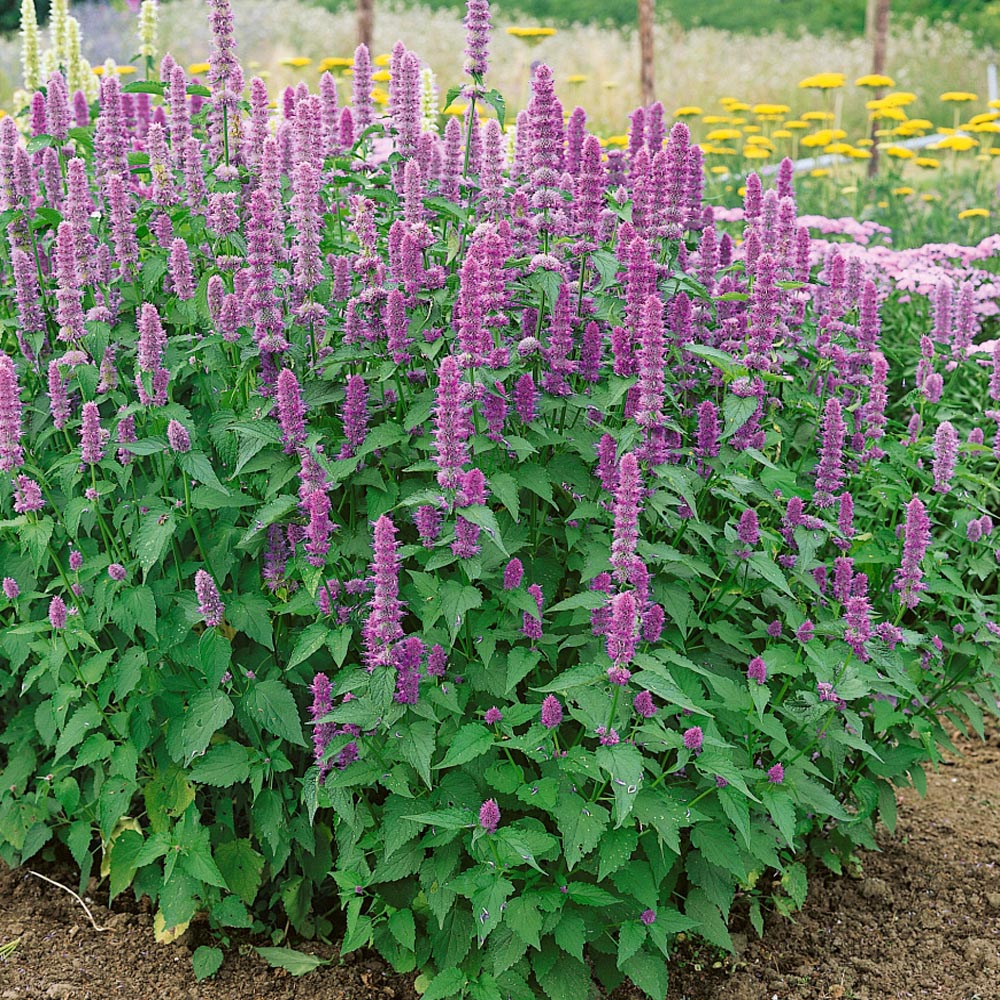
Korean Mint usually reaches 36 inches in height and it's popular with the insects with its liquorice-like scent. These flowers are also very nice for cutting and adding to fresh flower arrangements.
Attracts bees, butterflies and hummingbirds. Korean Mint usually reaches 36 inches in height and it's popular with the insects with its liquorice-like scent. These flowers are also very nice for cutting and adding to fresh flower arrangements. Height: 36 inches. USDA Zones: 4-9. Deer resistant.

Birds love the fruit. They are greatly favored by Black Birds and Cedar Waxwings, which have been know to strip a tree of all its berries.
Here is a link to a great web page about Firethorn and includes a recipe for Pyracantha Jelly.
Light: Full sun preferred but will grow in partial to fairly heavy shade. Flowering and fruiting will not be as heavy.
Moisture: Moist to very dry, well drained soil. Hardiness: Zones 5 - 9.
Usage: Pyracantha is often used as an espalier. Held flat against a wall, it can be shaped quite creatively. Because of its fast growth rate, sprawling, spreading habit, and ease of care, it can be used on slopes to great advantage requiring little maintenance or care. The wide-reaching stems may be pruned back as needed during warm weather as the shrub blooms on old wood. Even consider using it as an informal hedge! This will require some trimming and shaping for the first few years but the effort will produce impressively beautiful and secure
(thorny) hedges.
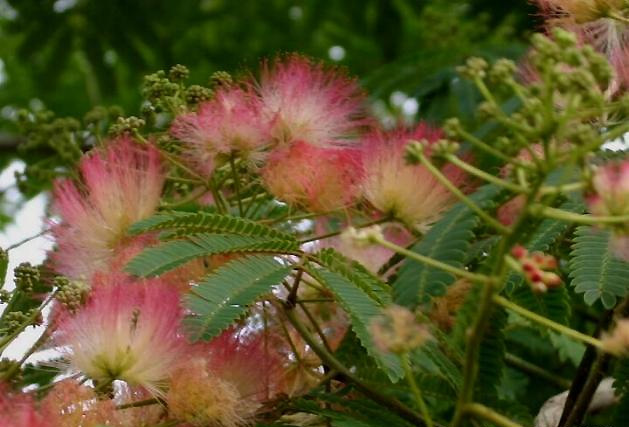
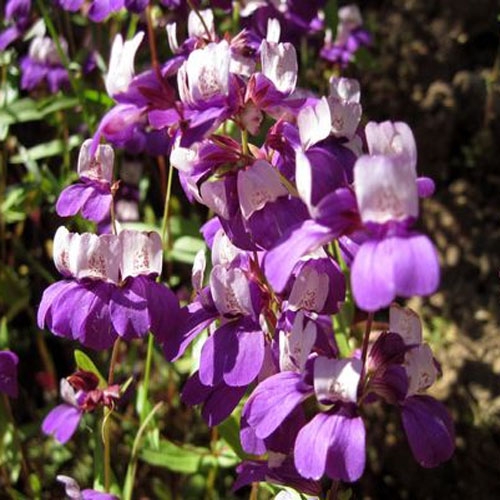
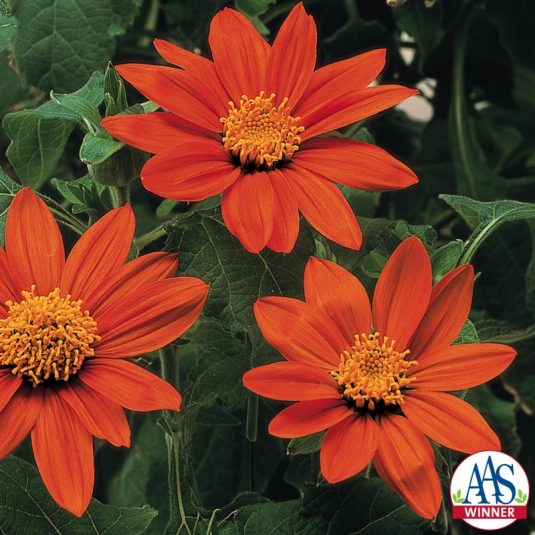
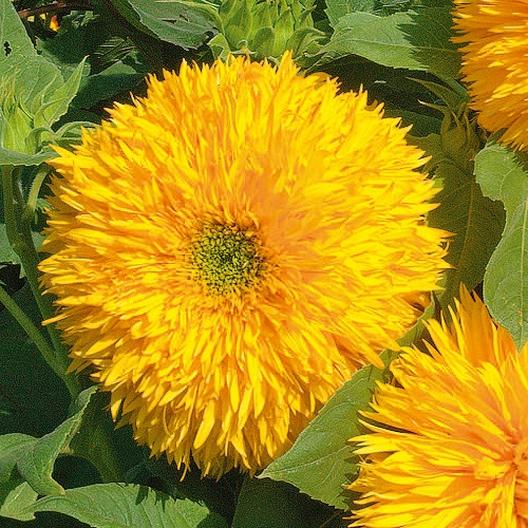
Although much taller than other garden plants, this multi-branching plant is not too tall to add to the back of a bed or border in a cottage, informal, cutting, or wildlife garden, where the flowers beckon to bees, butterflies, and beneficial insects, and the tasty seeds bring the birds flocking.
A favorite of florists for their unique texture, Tall Teddy Bear Sunflowers are a big hit with gardeners as well! Easy to grow, these fluffy headed beauties will reach nearly 6 feet tall! Be sure to cut sunflowers in the early morning to encourage longer-lasting blooms.
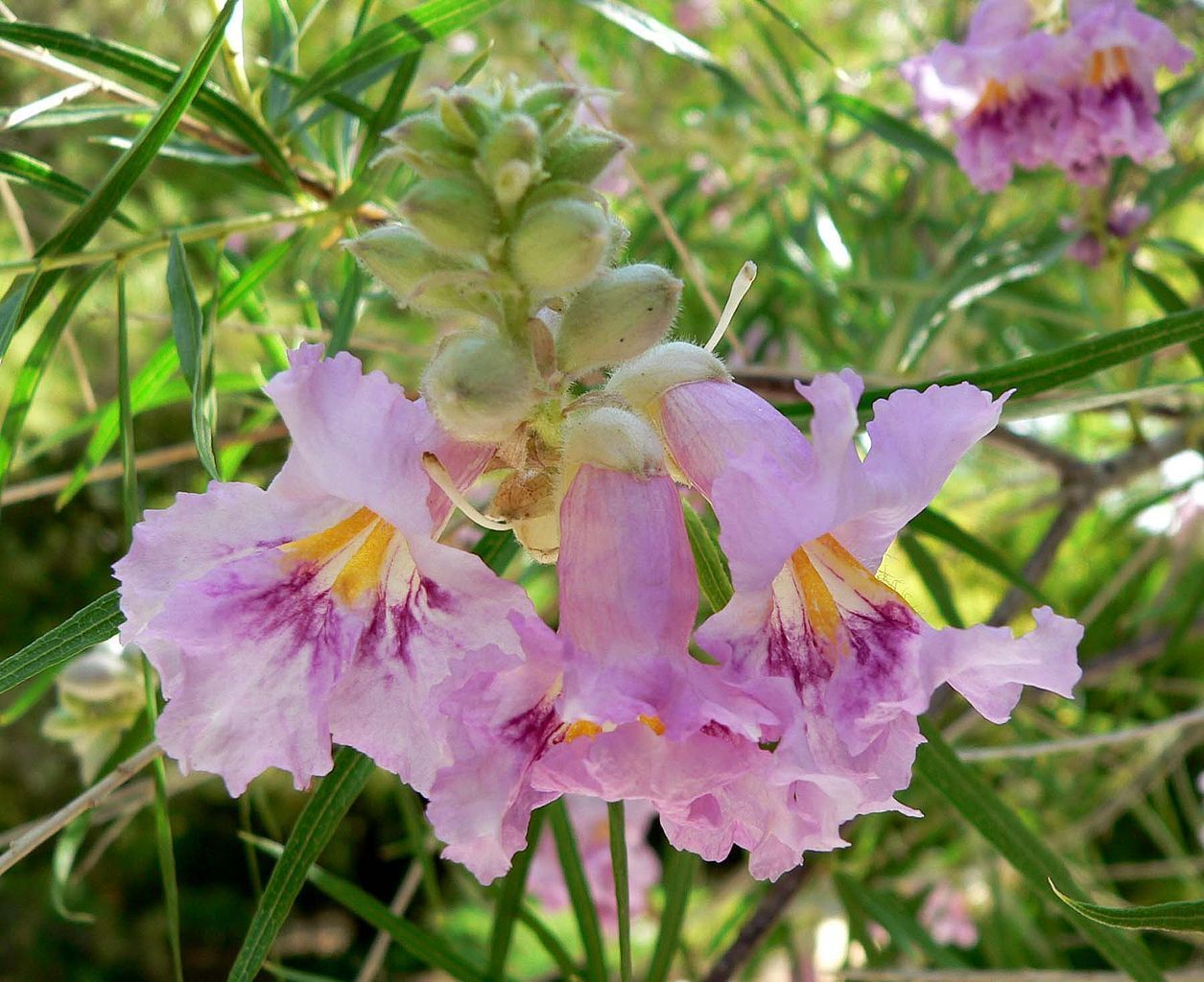
The Penstemon like flowers are fragrant, pink to lavender. They appear in May and keep coming until September or frost. Likes moderate water and sun. Does best inland and in desert.
This is a great plant for a bird garden, rock garden, xeriscape or lawn specimen.
Best suited for zones 6-10.
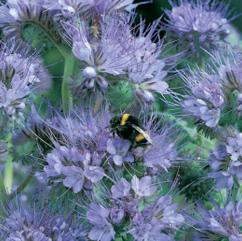
Grows about 12 to 24 inches tall, will germinate in about 15-60 days depending on soil and weather conditions, germinates best if soil temperature is in the 60-70°F range.
Cover seeds about 1/16" deep, blooms from April to July. 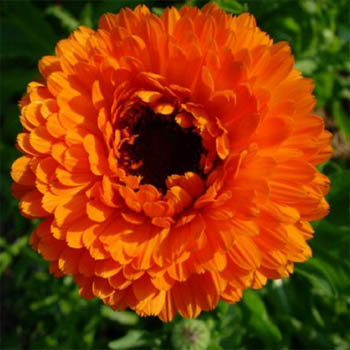
Calendula flower seed produces a hardy plant. It is happy in most soil conditions. It requires well-drained soil, preferring full sun to semi-shade. Calendula is attractive to bees, butterflies and birds. An annual plant growing to about 20 inches tall. For outside flower beds in zones 4-10. Deer resistant as well.
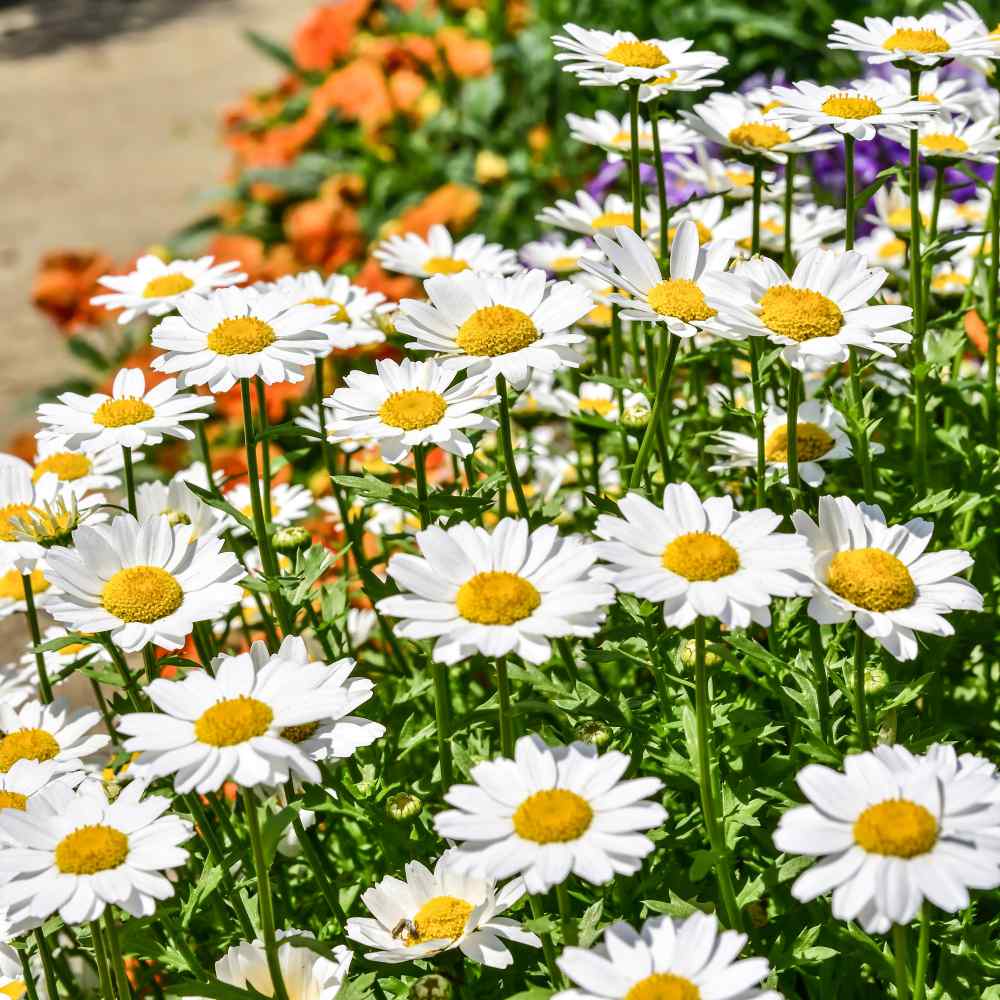
Butterflies love to visit these sweet little flowers! Chrysanthemums can be liberal self-sowers, and Creeping Daisy will drop its own flower seeds giving you brand new Creeping Daisy plants the following year. Creeping Daisy is technically a perennial, but only in frost free zones 9 and 10.
Creeping Daisy seeds can be sown directly outside in the spring after frost season is over. In a prepared seedbed that is weed free, so the flower seeds about 12 inches apart and press the Chrysanthemum seeds into the soil. Keep the seeds moist until germination occurs. Creeping Daisy care includes an application of all purpose fertilizer each month throughout the growing season and pinching back spent flowers to encourage continued blooming.
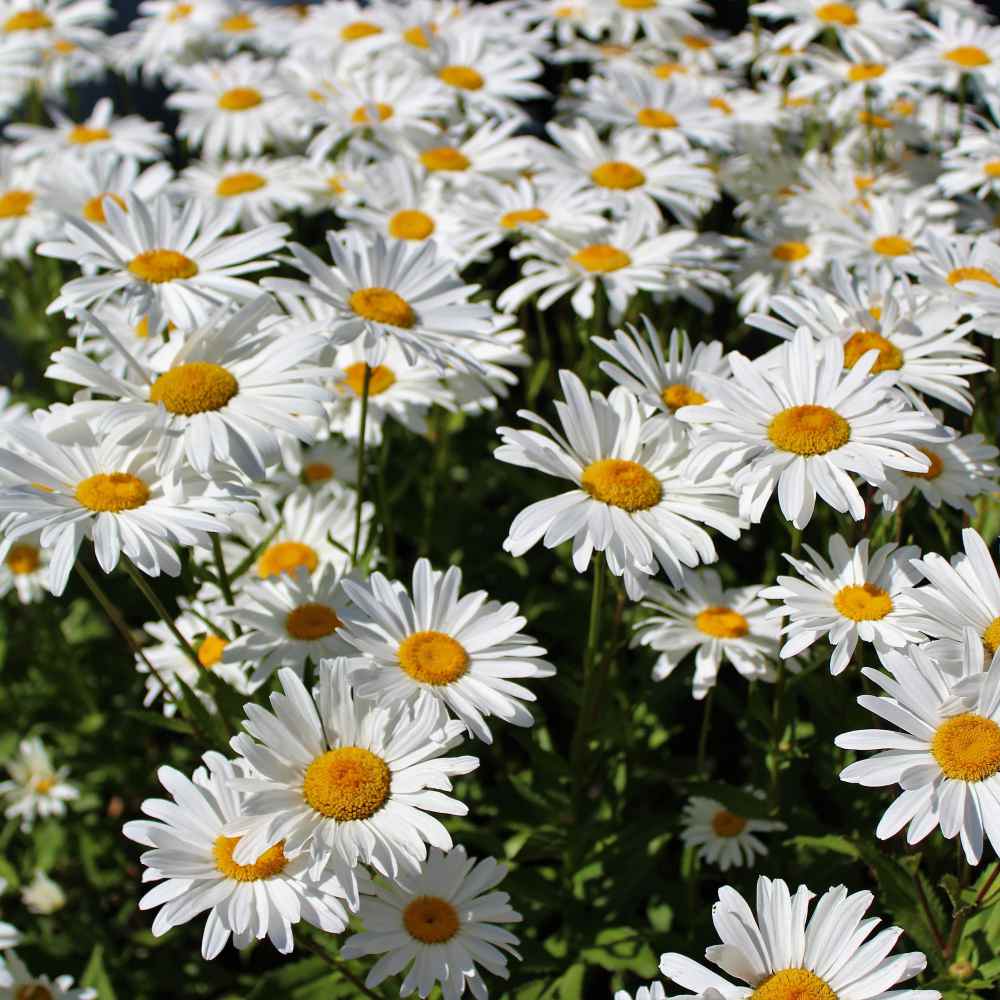
Shasta Daisy plants are ideal for a wild flower garden's edge or are attractive in butterfly gardens or combined with other perennials or annuals. For cooler climates with short growing seasons, start the Chrysanthemum Daisy seeds indoor 6 - 8 weeks before frost season is over. For warmer climates, sow the Shasta Daisy seeds directly outdoors into prepared beds in the spring after danger of frost has passed. Sow the wild flower seed on the surface and keep moist. Shasta Daisy flowers will not bloom the first year, but grow slowly to get established. It will then be a prolific bloomer in successive years. Shastas are one of the best daisies to grow from wild flower seed! Grows about 32 inches tall. A perennial for zones 3-9.
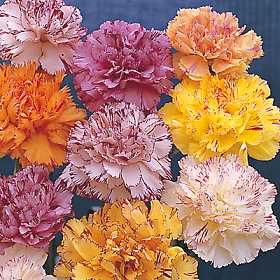
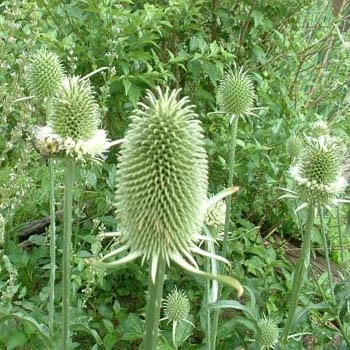
Teasel plants will perform well in sunny areas with well-drained soil. Once established they need very little care and are fairly drought tolerant. Deer do not bother the Fuller's Teasel plant. The Teasel flowers are very popular with bees, birds and hummingbirds who love the flowers and seeds.
Teasels are considered a biennial. The first year they will not produce a bloom, but the second year, tall spikes will form with flower heads that are 4 inches, cylindrical-shaped and made up of a mass of tiny flowers. The flowers are usually a lavender color and bloom in a band from the bottom of the flower head to the top, lasting about a month.
To keep a patch of Teasel plants in the garden, let a few of the flower heads go to seed. The Teasel flower seeds will drop and self-sow.
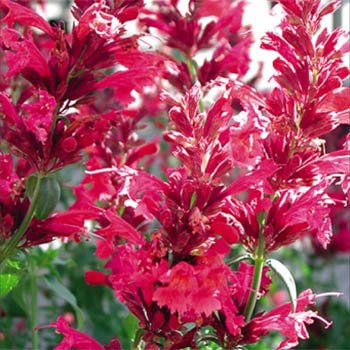

Hyssop is also considered to be a medicinal herb, with the oil obtained from the leaves used to make herbal baths and facials.
Hyssop is an excellent bee plant. Legend has it that beekeepers rubbed their hives with hyssop and other herbs to encourage bees to stay. Hyssop also attracts hummingbirds and butterflies; claims that it keeps cabbage butterflies away from crops or repels flea beetles have not been substantiated.
A perennial hardy in zones 3 to 10.
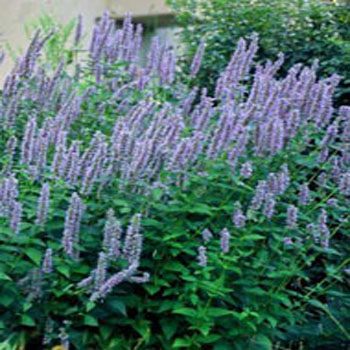
Strongly anise-scented, it is delightful for tea or as culinary seasoning.
Deer cannot stand the aromatic foliage.Beautiful, fragrant purple flowers growing 12-36" tall. Perennial. Zone 4-7.
Seed packs will contain many dormant seeds that may take until second second season to germinate, in addition to seeds that will germinate the first seaon, so be patient with them.
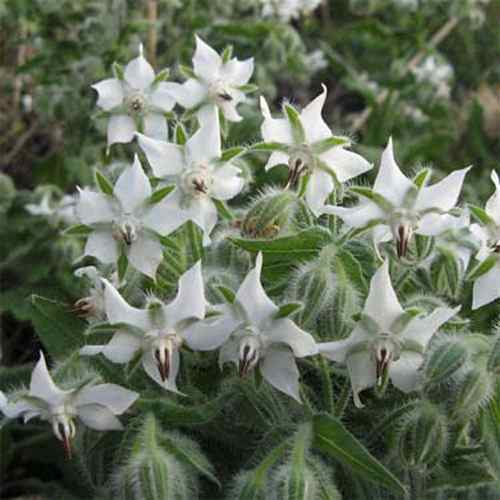
Plant this unusual 24 inch annual herb for its pure ornamental value, to attract much-coveted bees to your garden, and to harvest for teas and other summer drinks. When young, the cucumber flavored leaves may be added to salads. The flowers (which are excellent for cutting and have a long vase-life) are used as garnishes (in cold drinks like ice tea and lemonade) or added to salads. Cut sprays of Borage all summer long to garnish and add flavor to cold drinks and salads! Borage plants are also considered to be a great companion plant for vegetable gardens and orchards because of the attraction of bees to the blue flowers. Plant Borage seeds where pollination is needed! Borage is sometimes called Starflower or Bee Bread.
Borage is a hardy annual which means that the seeds can be sown outside in the early spring, or even in the fall and overwintered in the soil ready to come up at the first signs of spring.
Borage seeds need complete darkness to germinate. Plants grow 2-3 feet tall.

They make a lovely addition to the wild flower garden or to the back of the perennial garden as they can reach 48 inches in height.
Historically, the Boneset plant was commonly used by some North American Indian tribes and lay herbal doctors for its properties as a febrifuge, laxative, stimulant, and diaphoretic. The Boneset herb was often used to treat flu epidemics, and still today, some use the dried leaves and flowering tops to make Boneset tea or tincture to treat colds and flu. Hardy to zone 3.
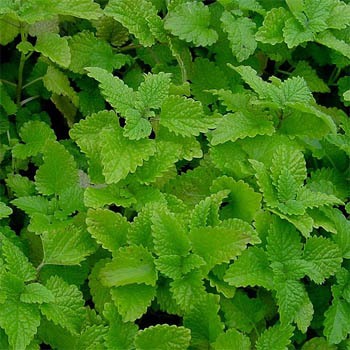
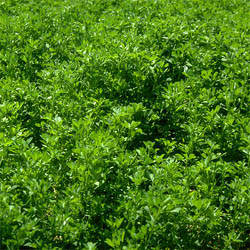

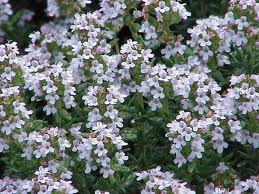
It even makes a pretty patch of small ground cover. Growing thyme provides an anchor in an herb garden in areas where it is evergreen in winter. Thyme is also perfect for containers, either alone or in combination with plants that won't shade it out.
It is not only attractive in the perennial border or herb garden, but it also attracts birds, bees and butterflies to the garden as well. It is also commonly referred to as Garden Thyme or English Thyme.
This variety is often planted near vegetables to help control flea beetles and several cabbage pests.
A perennial for zones 4-9.
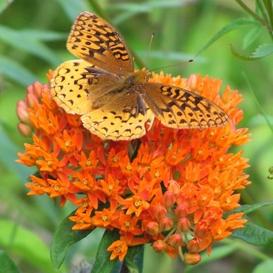
Very bright orange or yellow flowers. U.S. native. This plant's milky white sap may irritate skin. Its stiff, thick branches may act as treillage to support weaker neighboring plants. Attracts bees and butterflies. At any given time you may see species of Monarch, Red Admiral, Painted Lady, Cabbage White, Gray Hairstreak, Western Swallowtail, and many other butterfly varieties feeding on this plant.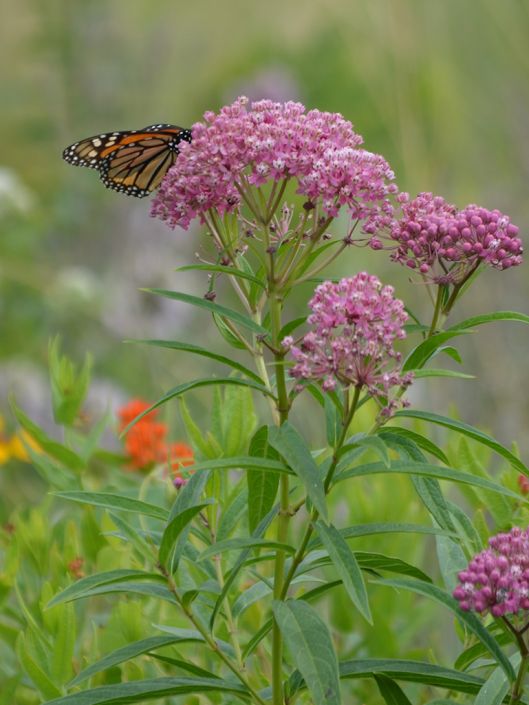
If growing Rose Milkweed from seed, try fall planting, or if planting in spring be sure to first moist-cold stratify the seeds for a month. Large numbers of Rose Milkweed can often be seen growing in wetland settings.
Plants grow about 48 inches tall, hardy for zones 3-9. Cannot ship to HI
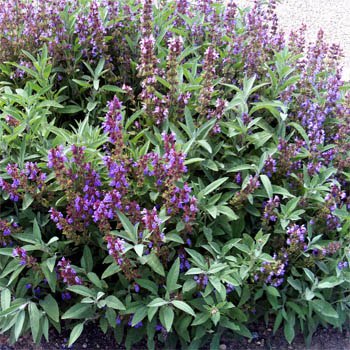
It is also a very attractive, evergreen perennial that produces mauve colored flowers during the blooming season. It is an excellent ground cover for edging sidewalks or garden pathways where its attractive foliage and flowers can be appreciated. Many people also dry sage for creating aromatic wreaths and dried flower arrangements. It's such a versatile plant, growing in a rock garden or bordering an herb garden and so easy to start from seeds.
Containing naturally-occurring vitamins and minerals, the herb sage is best known as a culinary spice that adds flavor to poultry dishes. However, sage has been used for hundreds of years in folk medicine to treat a variety of different ailments. Most commonly drunk as a tea, sage herb is good for the nerves, digestive system and for balancing estrogen levels in women.
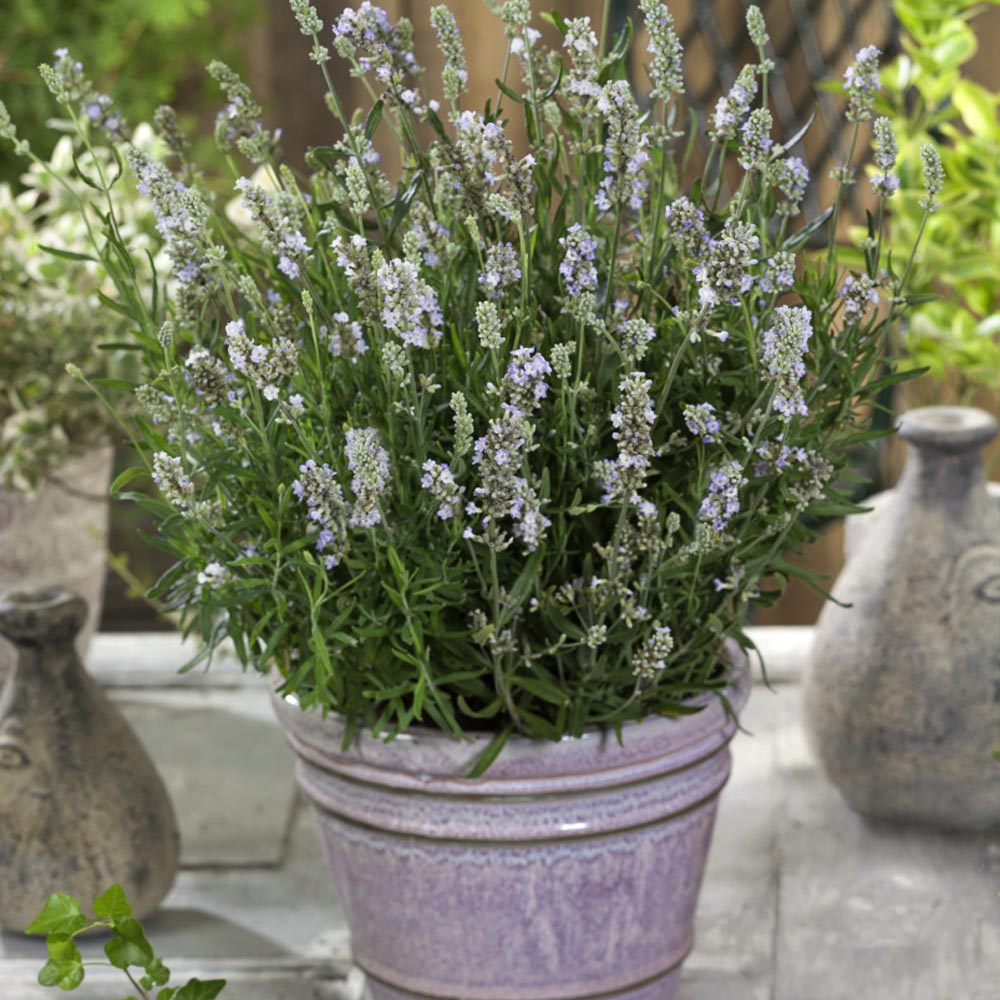
If you have a sunny spot, this little white Lavender herb will not disappoint! Both the silvery green foliage and the delicate white blooms have a wonderful fragrance. It is irresistible to bees and butterflies, and just wait until the scent catches on the summer breezes! With a long bloom season, and a pretty display, this is a great addition. hardy to zone 4.
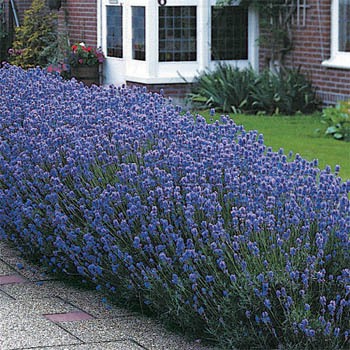
It was reportedly named English lavender because of its ability to grow well in the English climate.
This "true lavender" is commercially planted for harvesting its oils for use in perfumes.
It also grown for cutflowers, and it's atrraction for bees and butterflies. Cleaned seed, treated for fast,
uniform germination, grows 16 inches tall, hardy to zone 4.

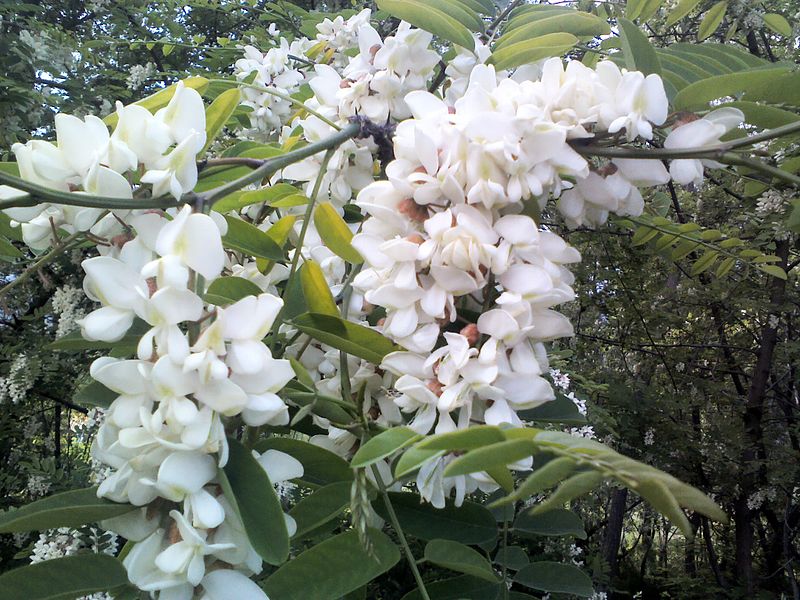
An excellent shade tree with acacia type foliage that will mature at about 50 feet tall and 25 feet wide. Normally has thorny stickers. The fragrant flowers can be smelled for hundreds of feet in spring. This is a tree that grows well in poor soil and can be an aggressive grower in good soil, so probably best suited for areas you want to dress up or hide, and do not mind the suckering growth.
The bruised foliage mixed with sugar will attract and kill flies, a useful attribute.
Cannot ship to New York state. Grows well in zones 3-9.

This is the perfect flowering plant for hummingbirds, and they visit it all day long. Chilean Glory Vine looks delicate, but it is vigorous and easy to grow and is considered a perennial in USDA Zones 9 - 10, but it will grow like an annual in colder zones. For areas with a long growing season, start the Eccremocarpus Scaber seeds directly outdoors in a prepared seedbed. In colder zones, start the flower seeds indoors 6 - 8 weeks before the end of frost season.
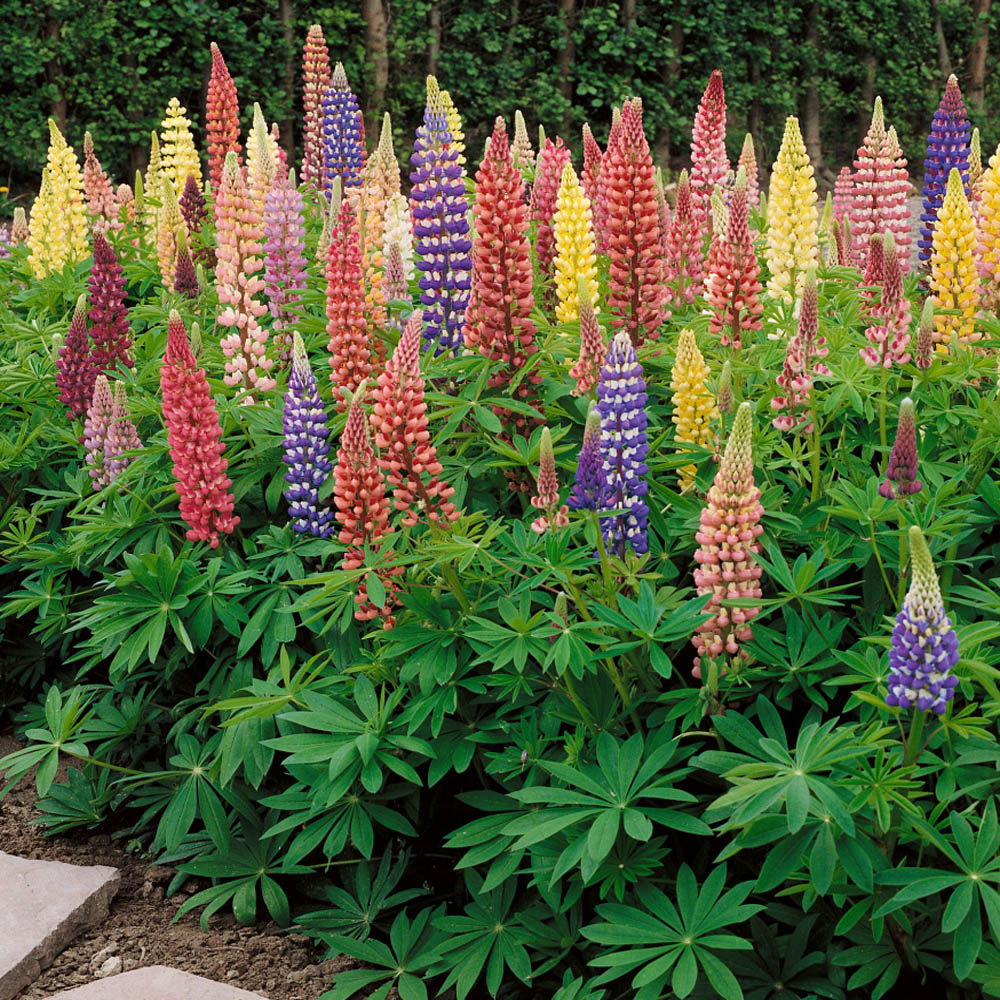
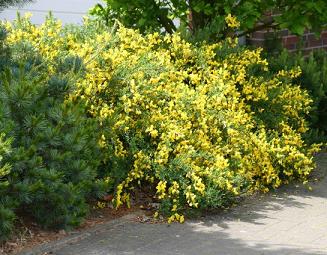
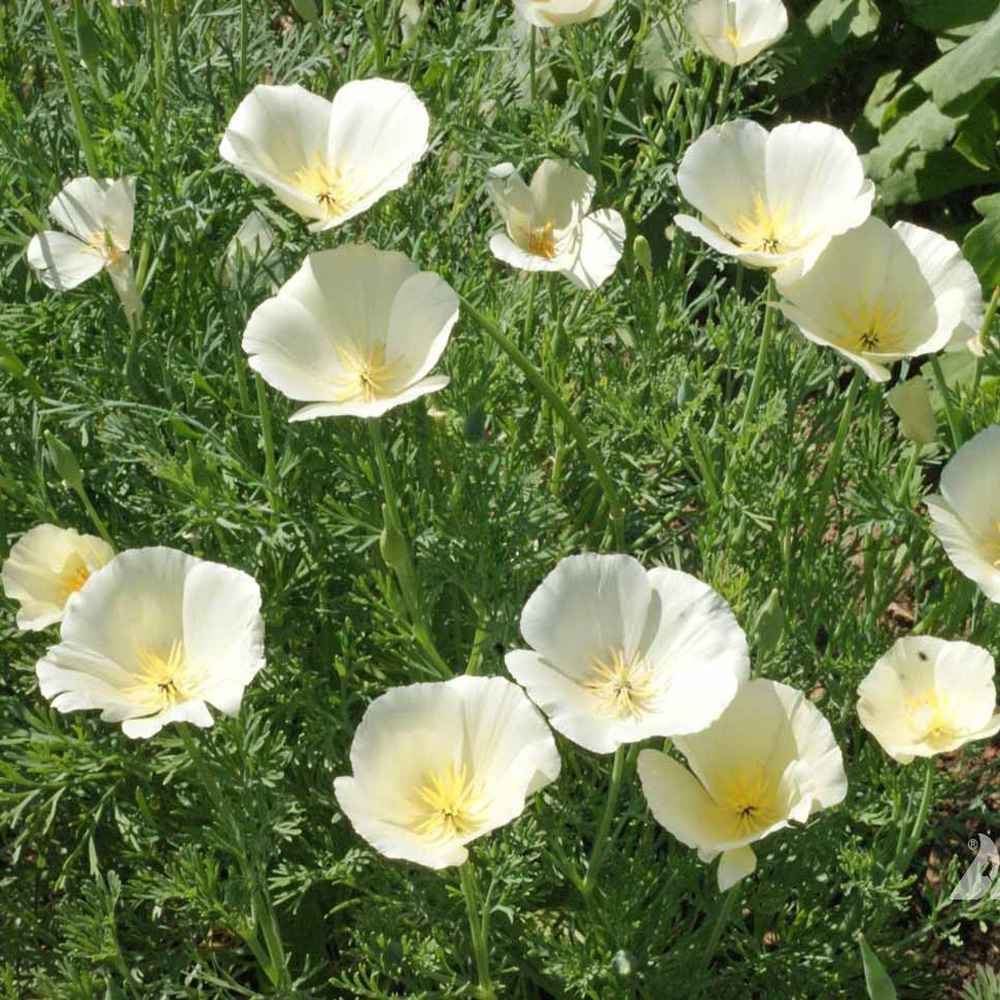
White Linen California Poppy will produce creamy white flowers that measure 2 or 3 inches wide in diameter. The plants will grow to a mature height of roughly 12 to 18 inches tall.
Grown as a tender perennial, they attract an array of beneficial insects to the garden, such as butterflies, bumblebees, honeybees and more.
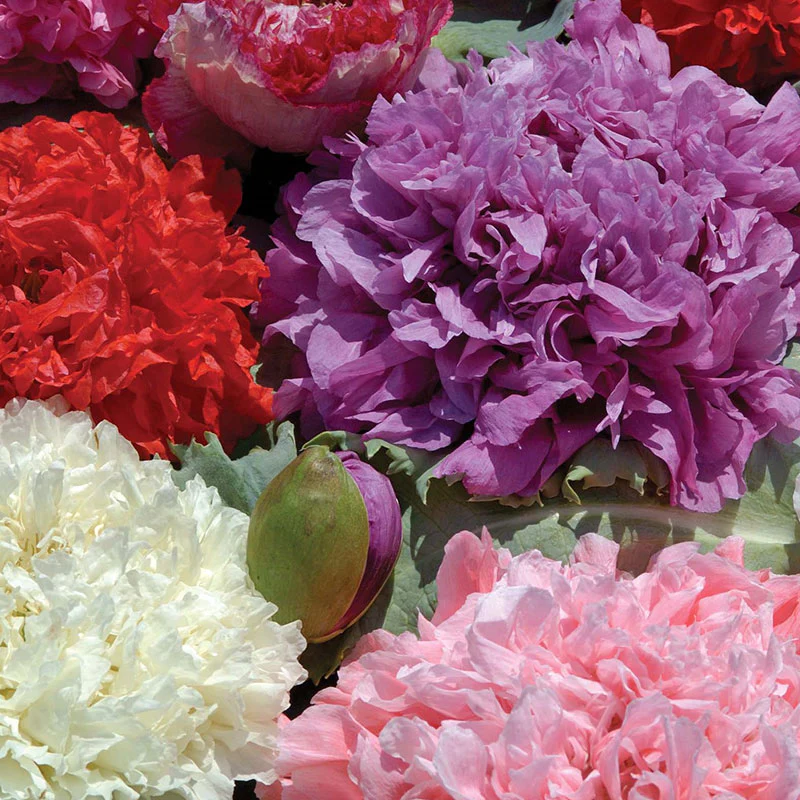
Grows about 30-32 inches tall, usually grown as an annual, will re-seed itself.
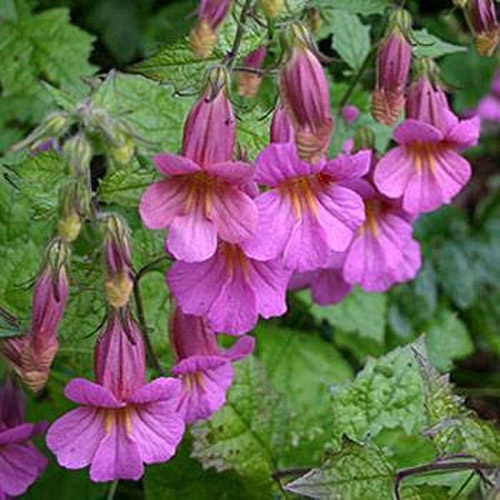
Easy to grow, it is a perennial but might not survive above zone 7 so grow it there as an annual. Blooms prolifically first year from seed if sown the previous fall. No garden should be without this lovely plant, it looks both dainty and really exotic.
Although Chinese foxglove is not as hardy as its lookalike, digitalis, it is more versatile, growing well in shade and is even fairly drought-tolerant. Mature Height: 24-36", Spacing: 12-18". Zones 7-10.
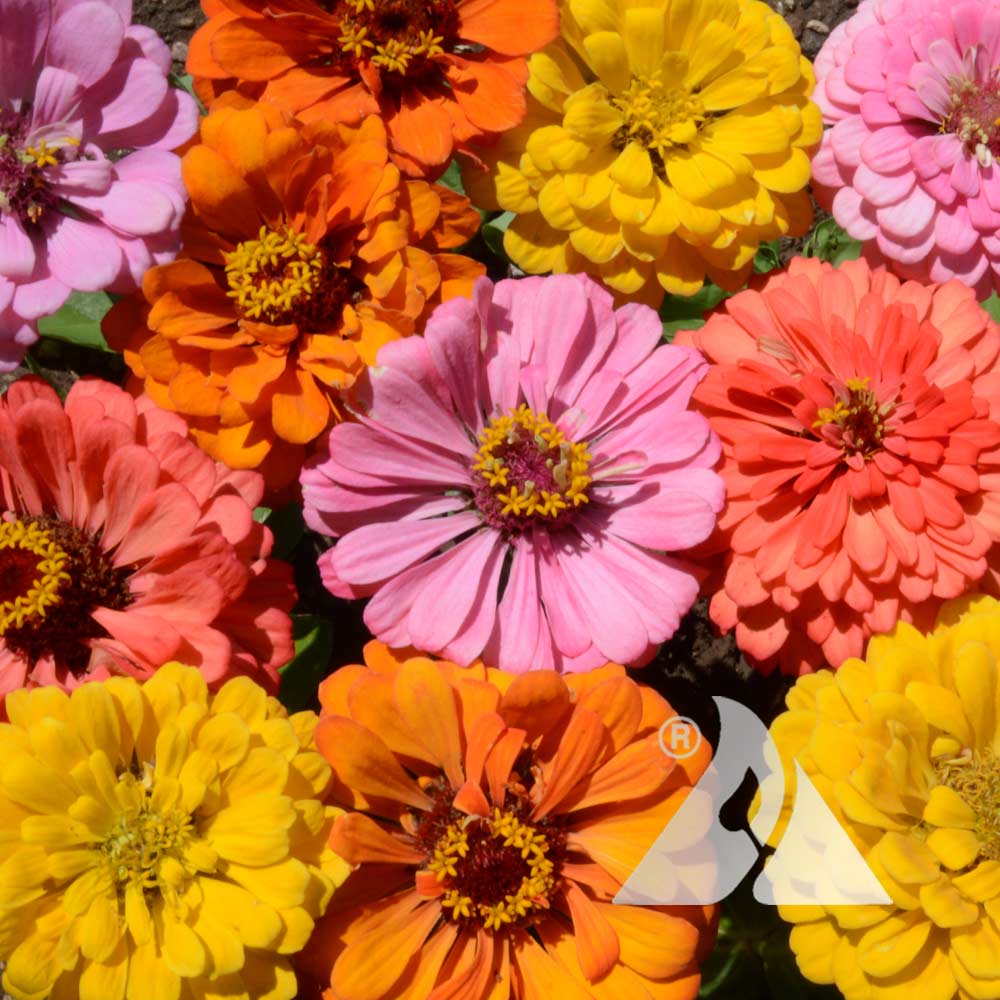
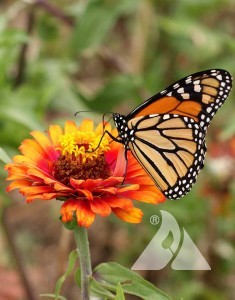
When the females cannot find suitable habitat to lay eggs, the life cycle is interrupted and the overall population decreases. While scientists have been aware for several years of the Monarch butterfly's life threatening situation and possible extinction, promoting public, government and industry awareness of the plight of this beautiful insect is probably the only thing that can lead to saving it.
2 ounce package of seeds will cover 300 square ft.
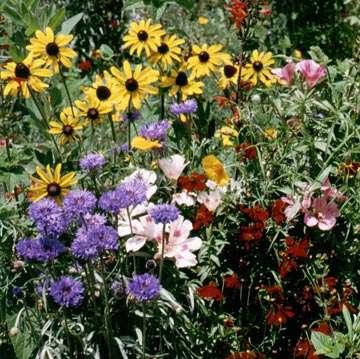
Contains: Coneflower, Arroy Lupine, Mallow, Four-O'Clock, Nasturtium, Zinnia 'Pumila Mix', Bird's Eyes, Rocket Larkspur,
Sweet William Pinks, Spurred Snapdragon, Corn Poppy, Scarlet Sage, Catchfly, Balsam, Dwarf Columbine, Foxglove, Maltese Cross, Lemon Mint and Rocky Mountain Penstemon.
Sow seeds in February in South, April in the North.
18g package of seeds will cover 100 square ft.

